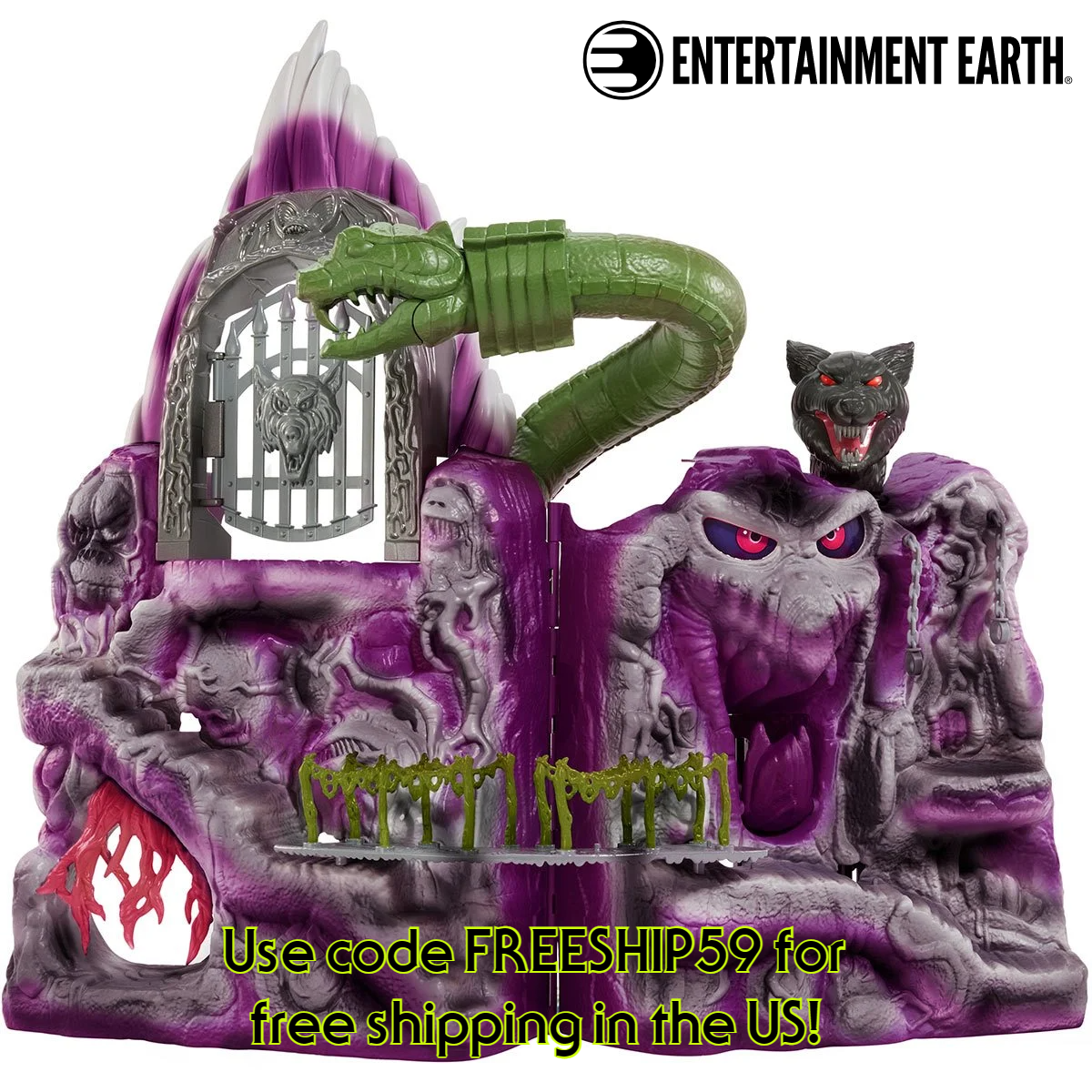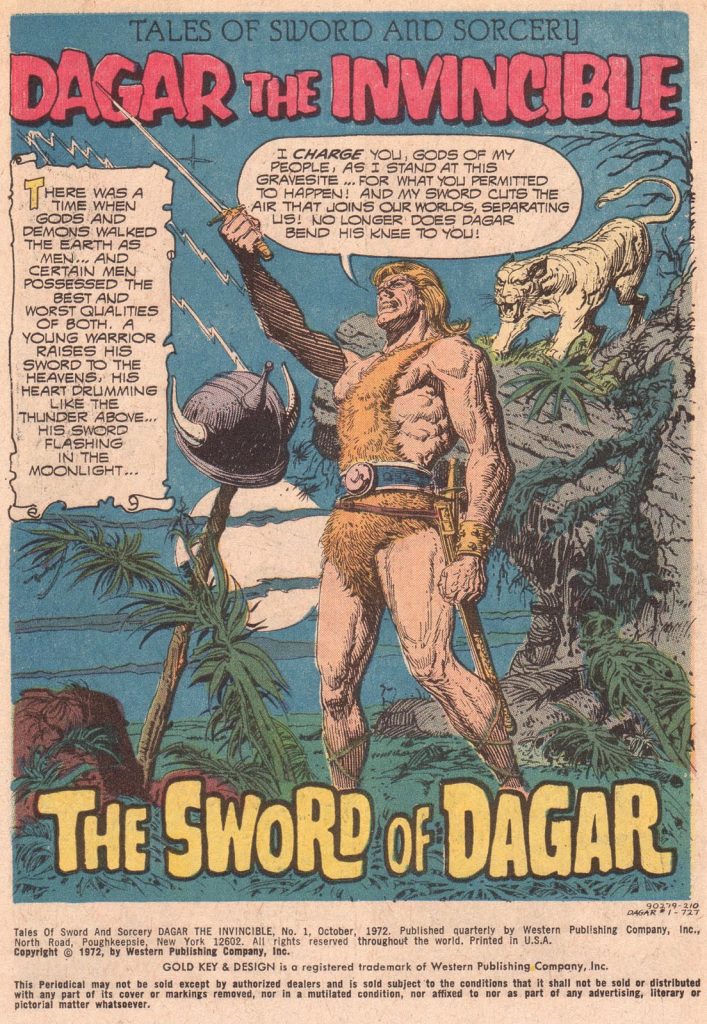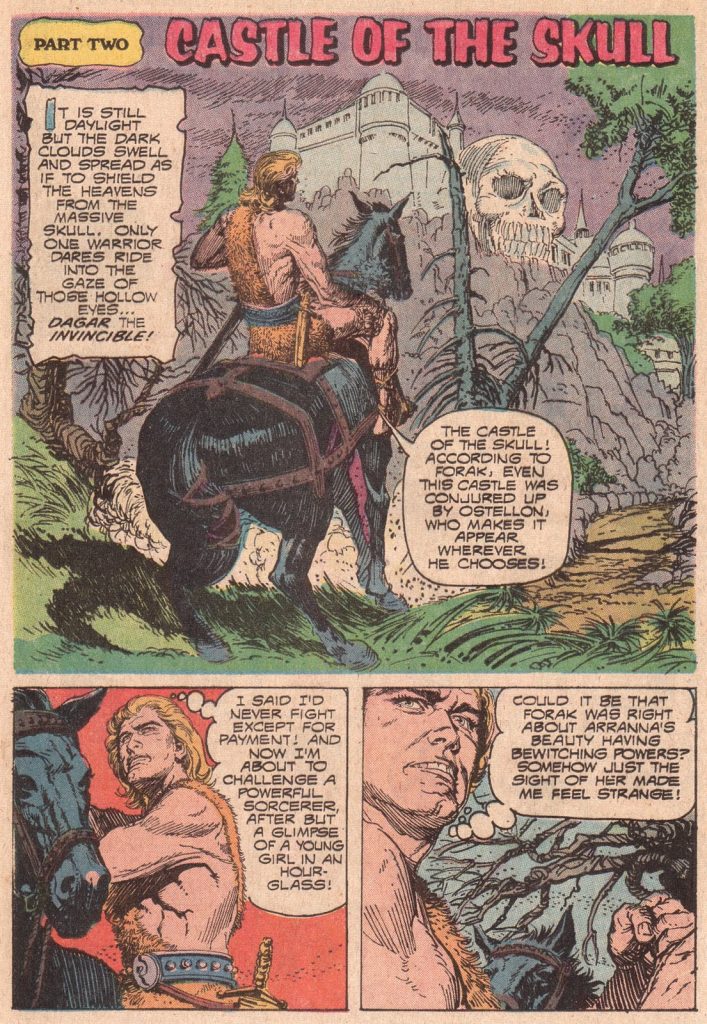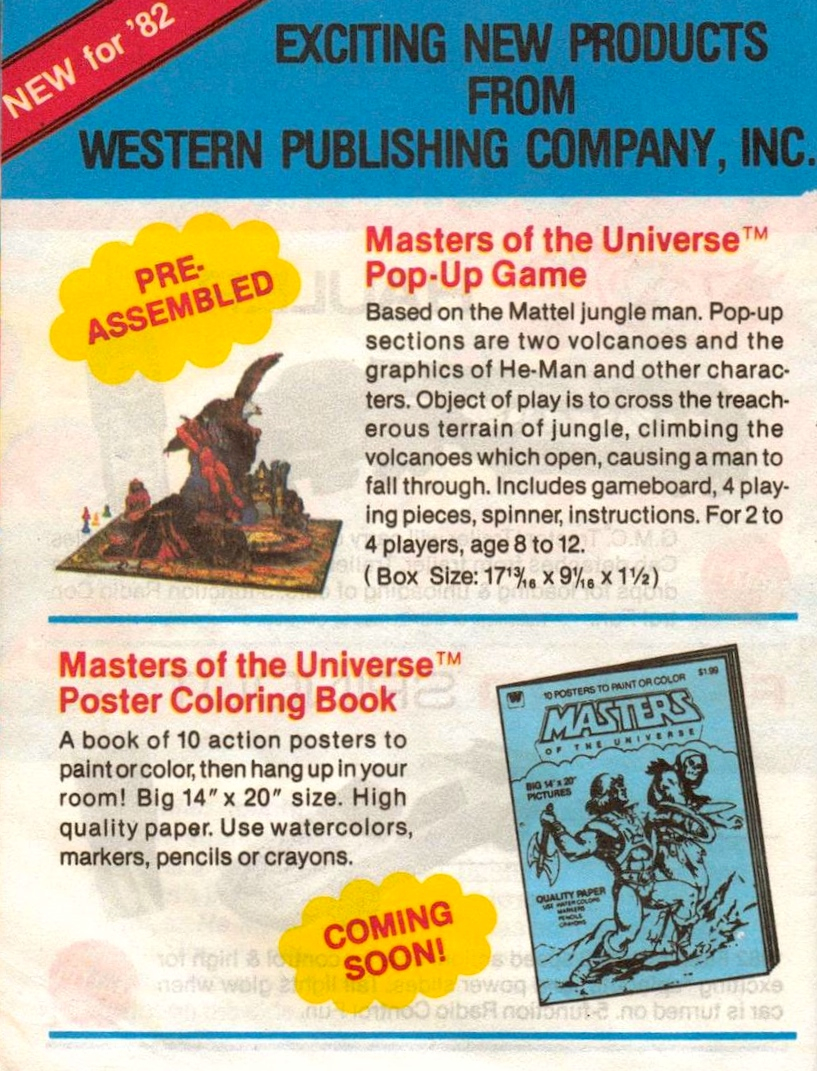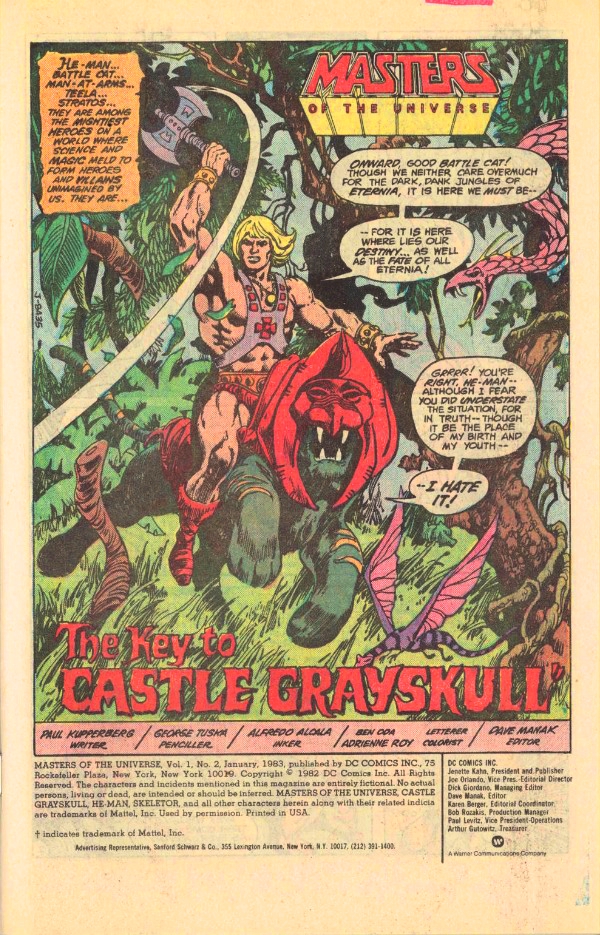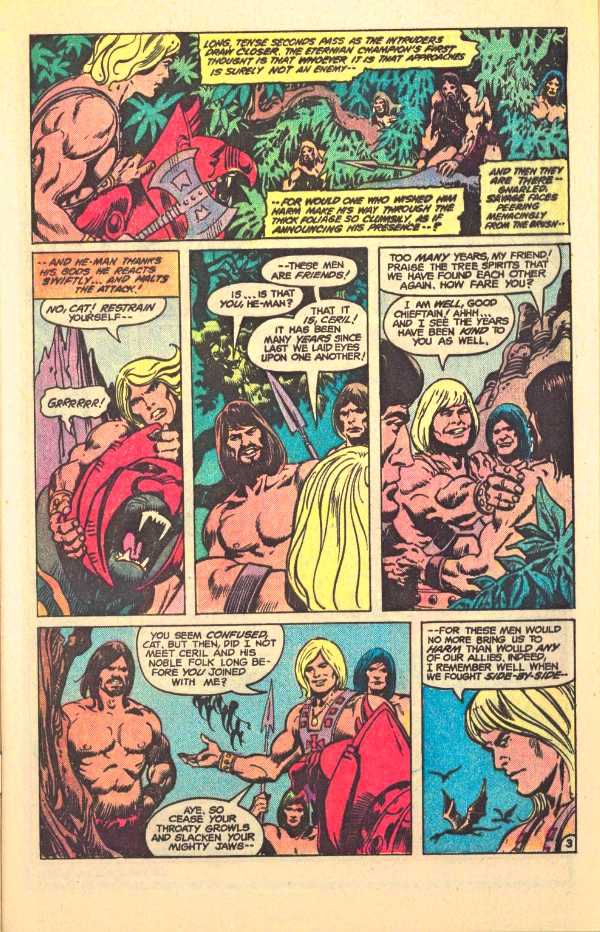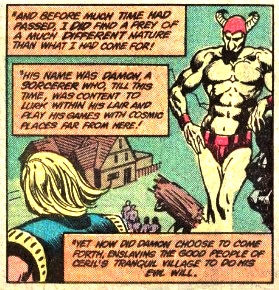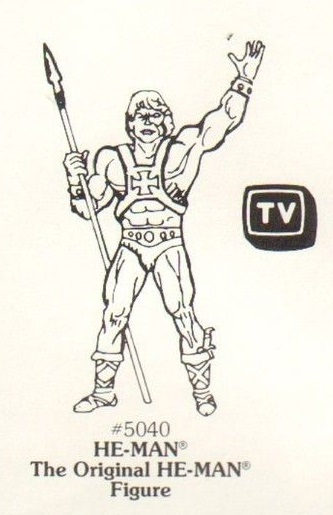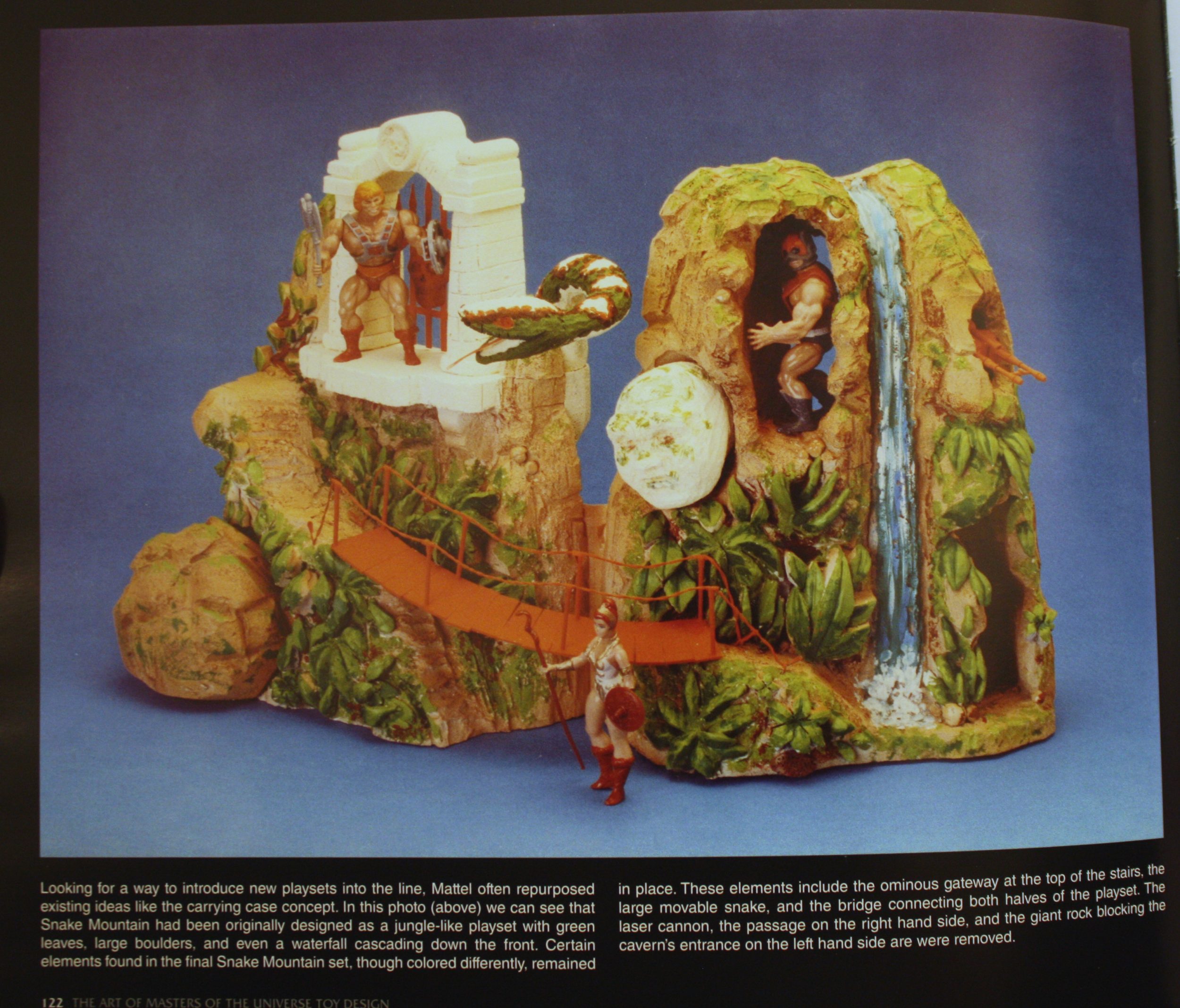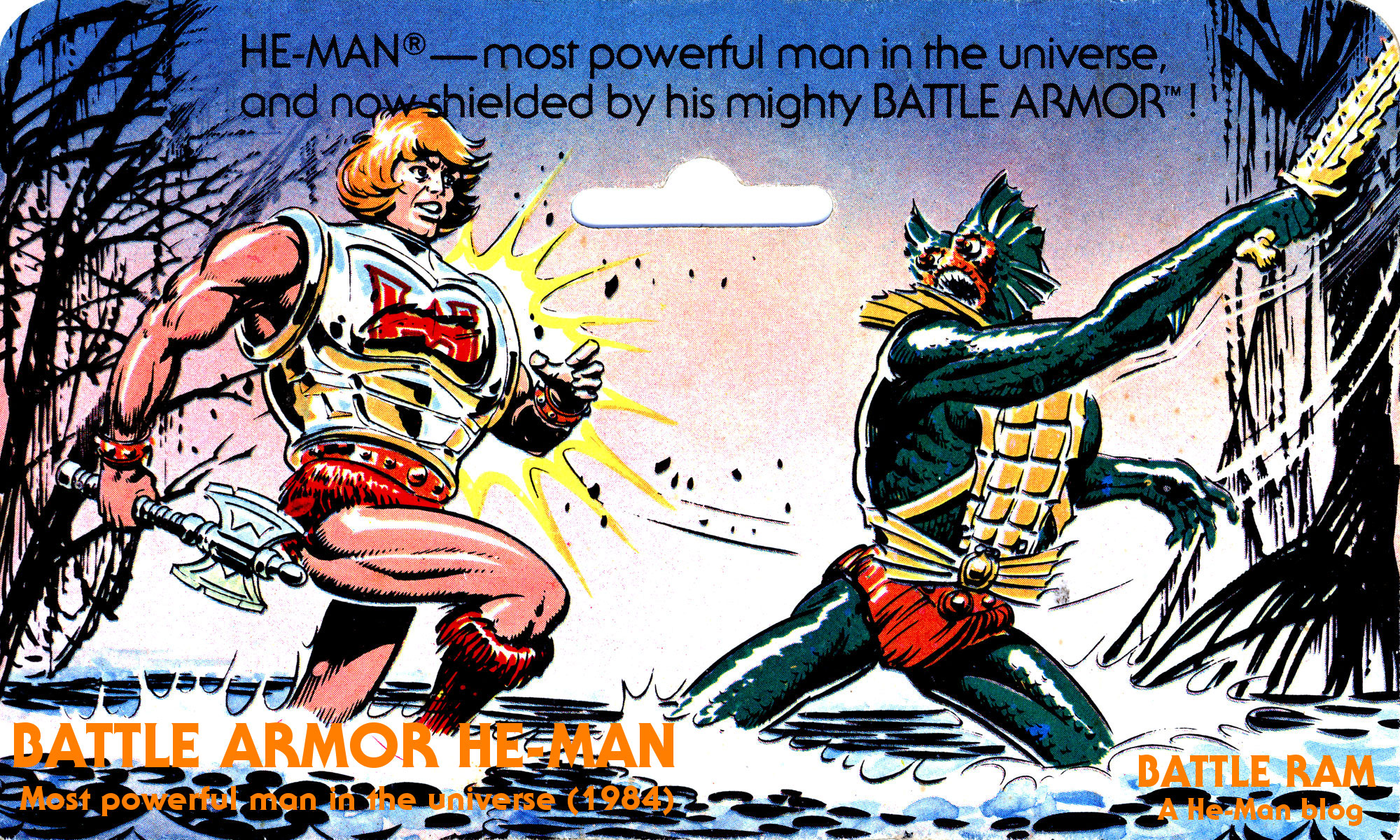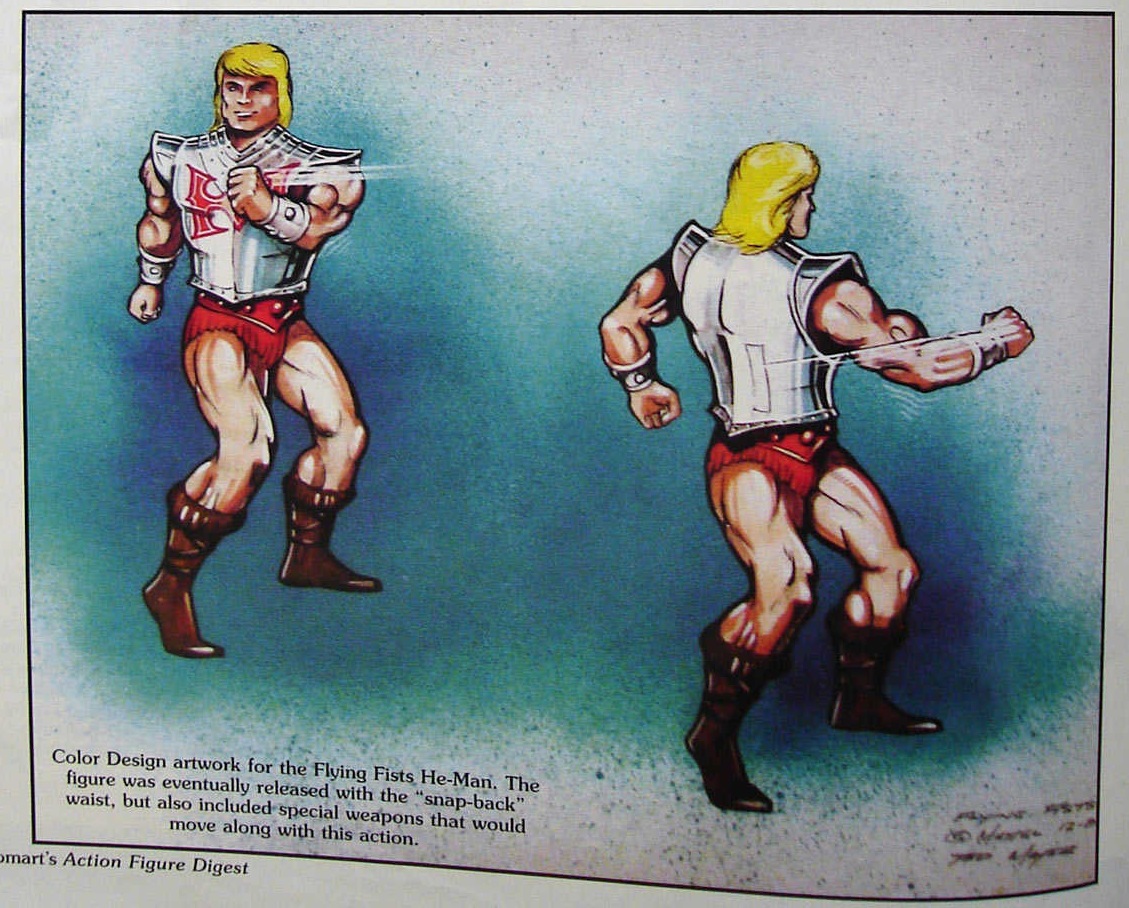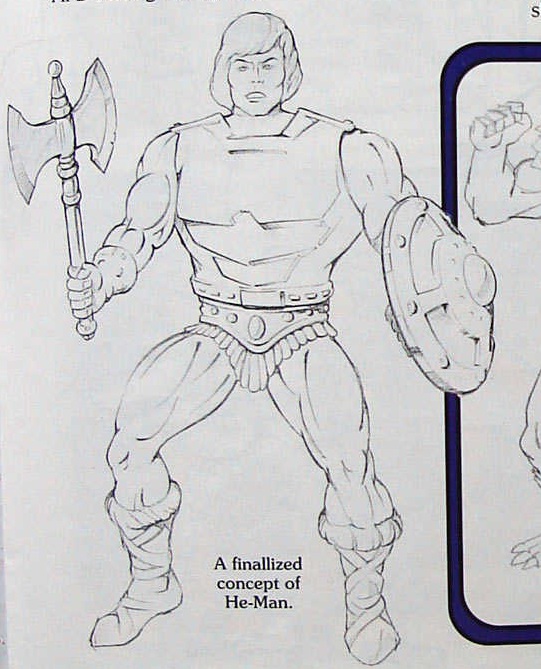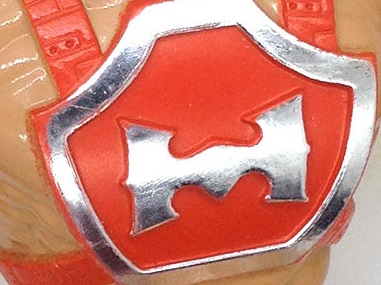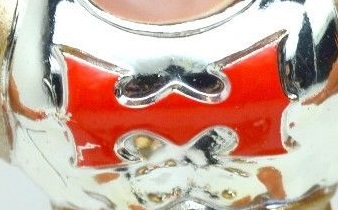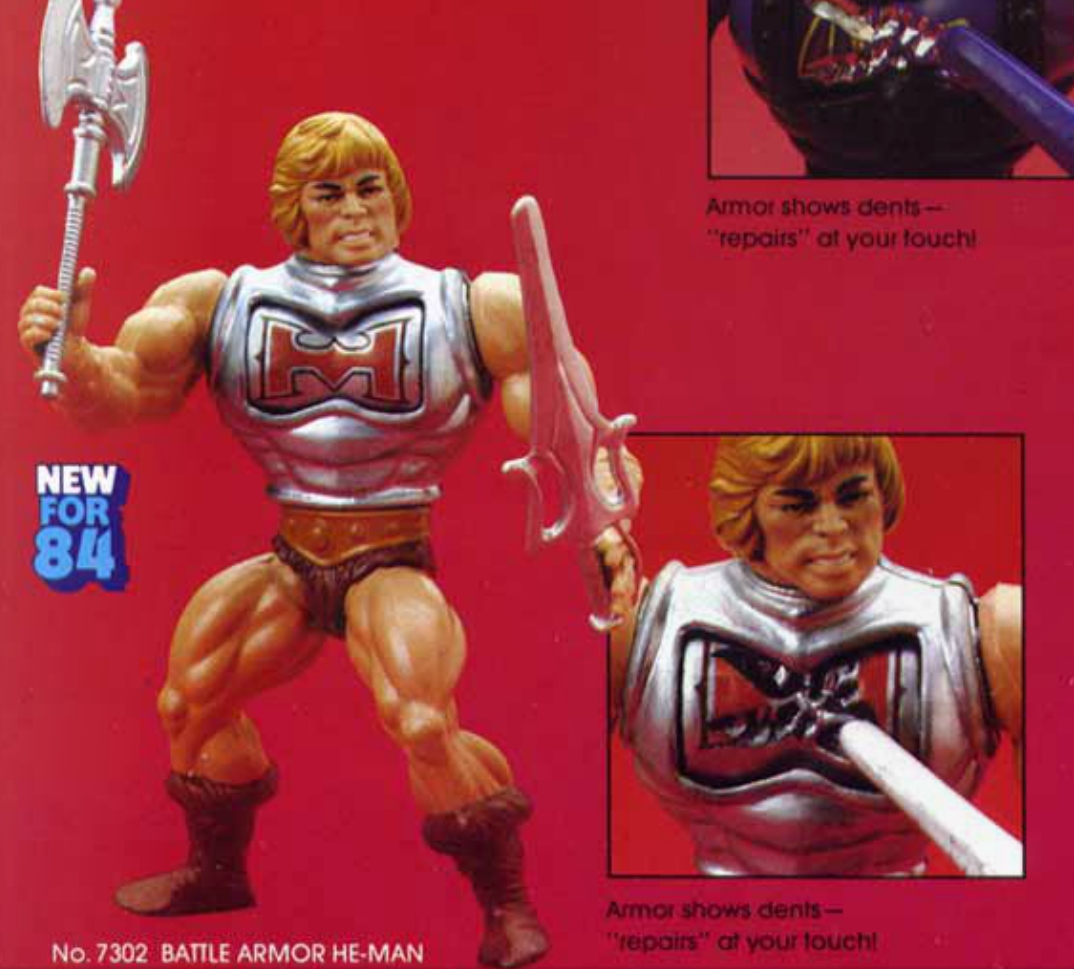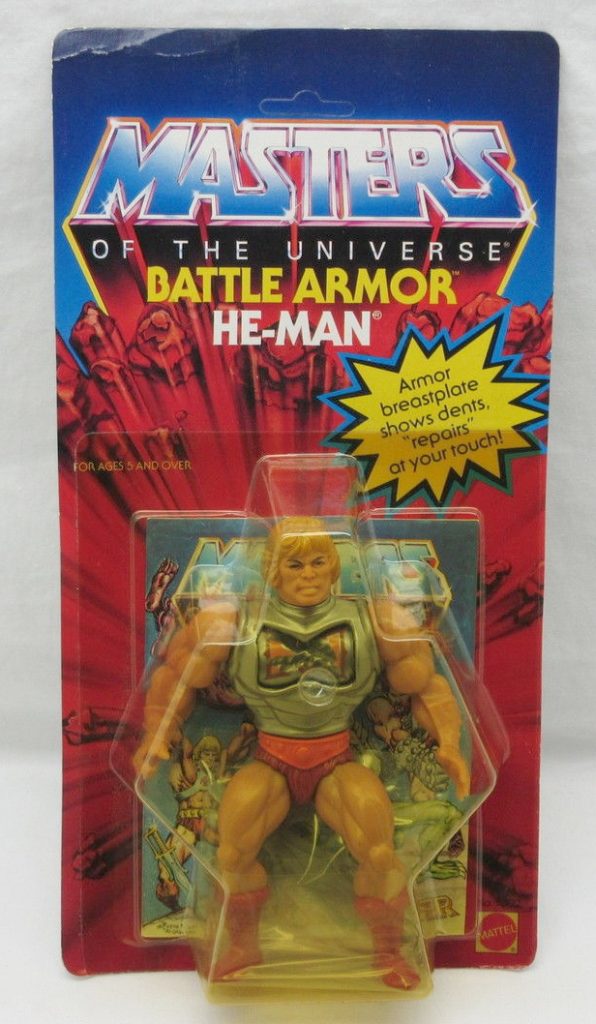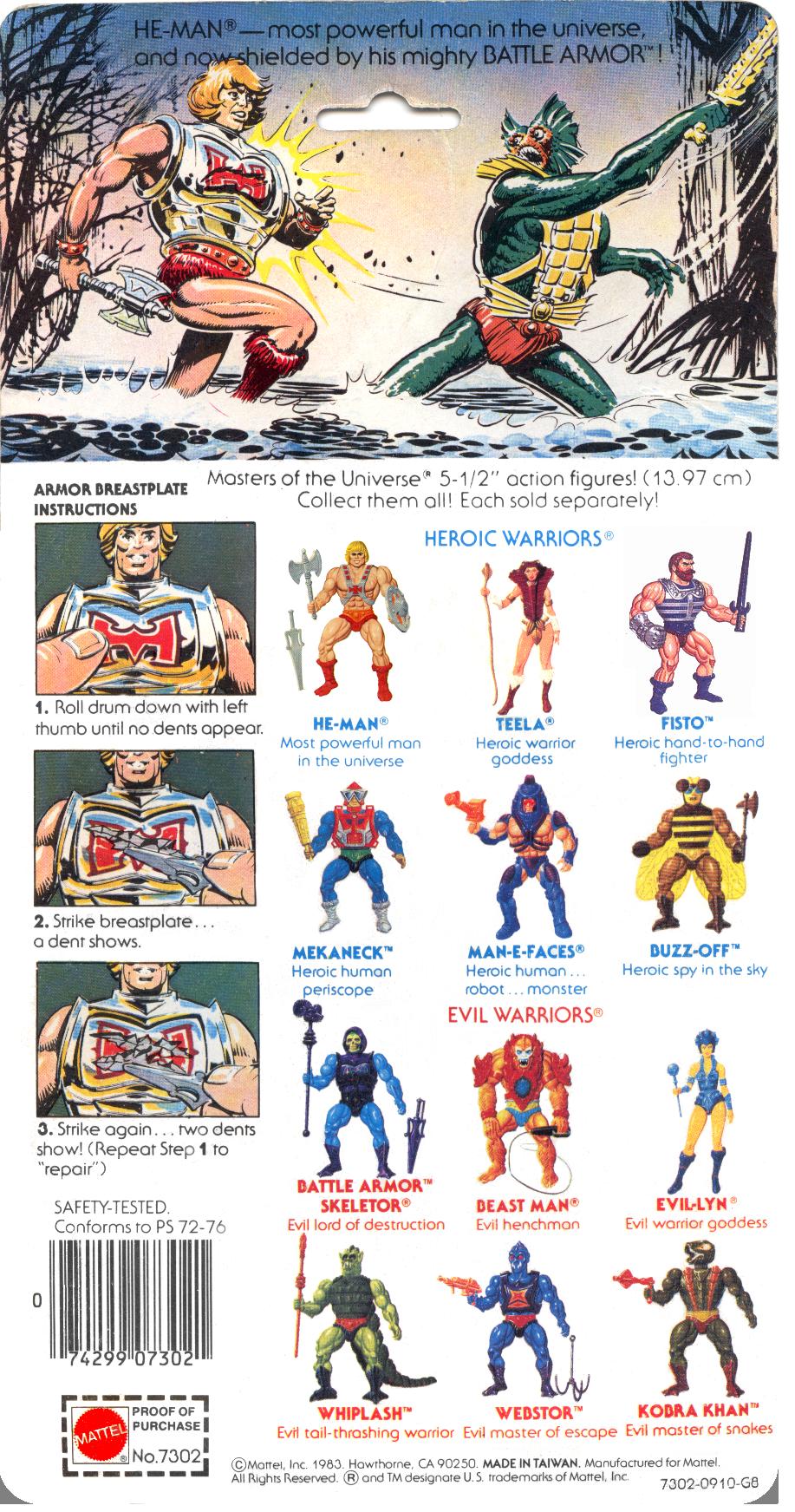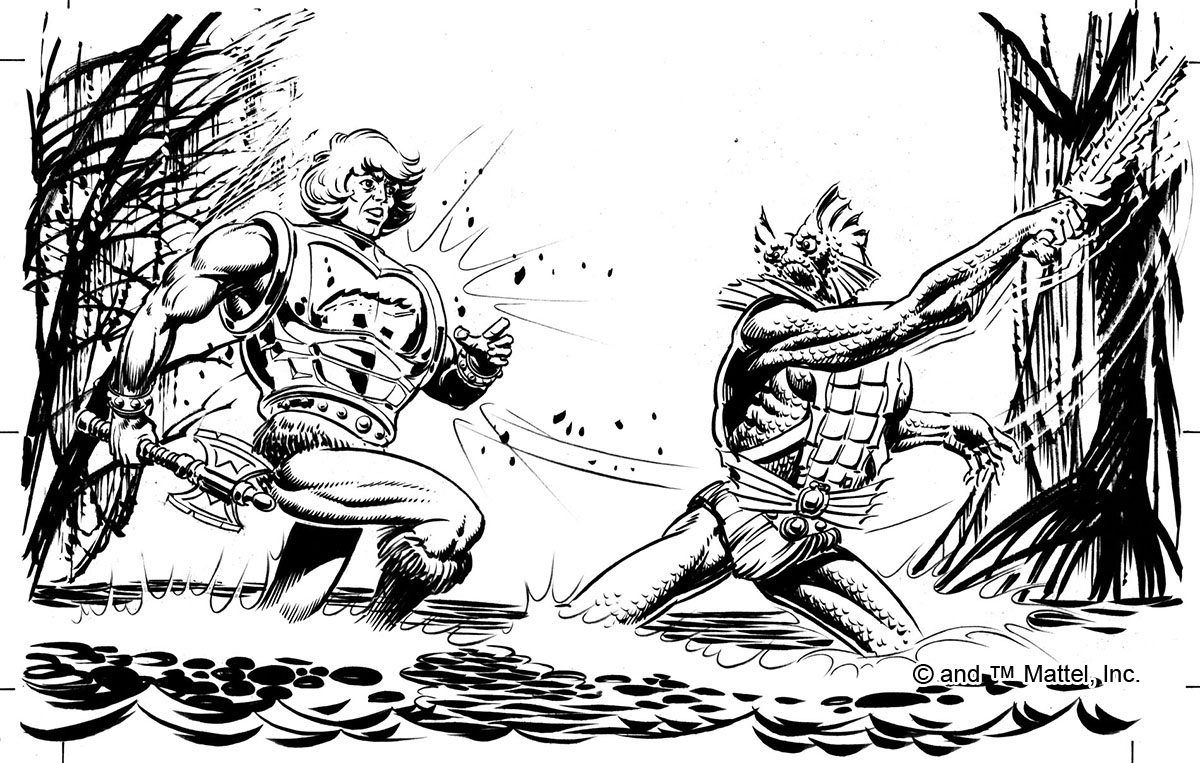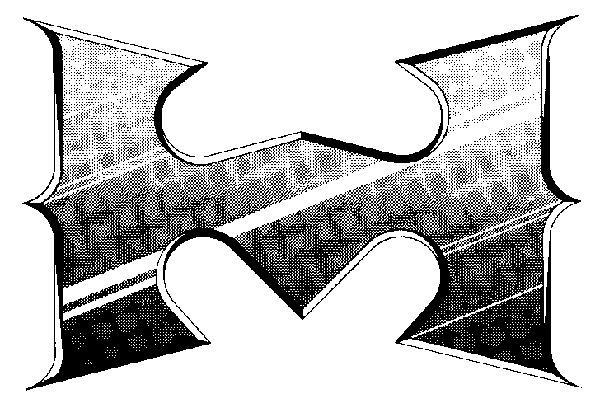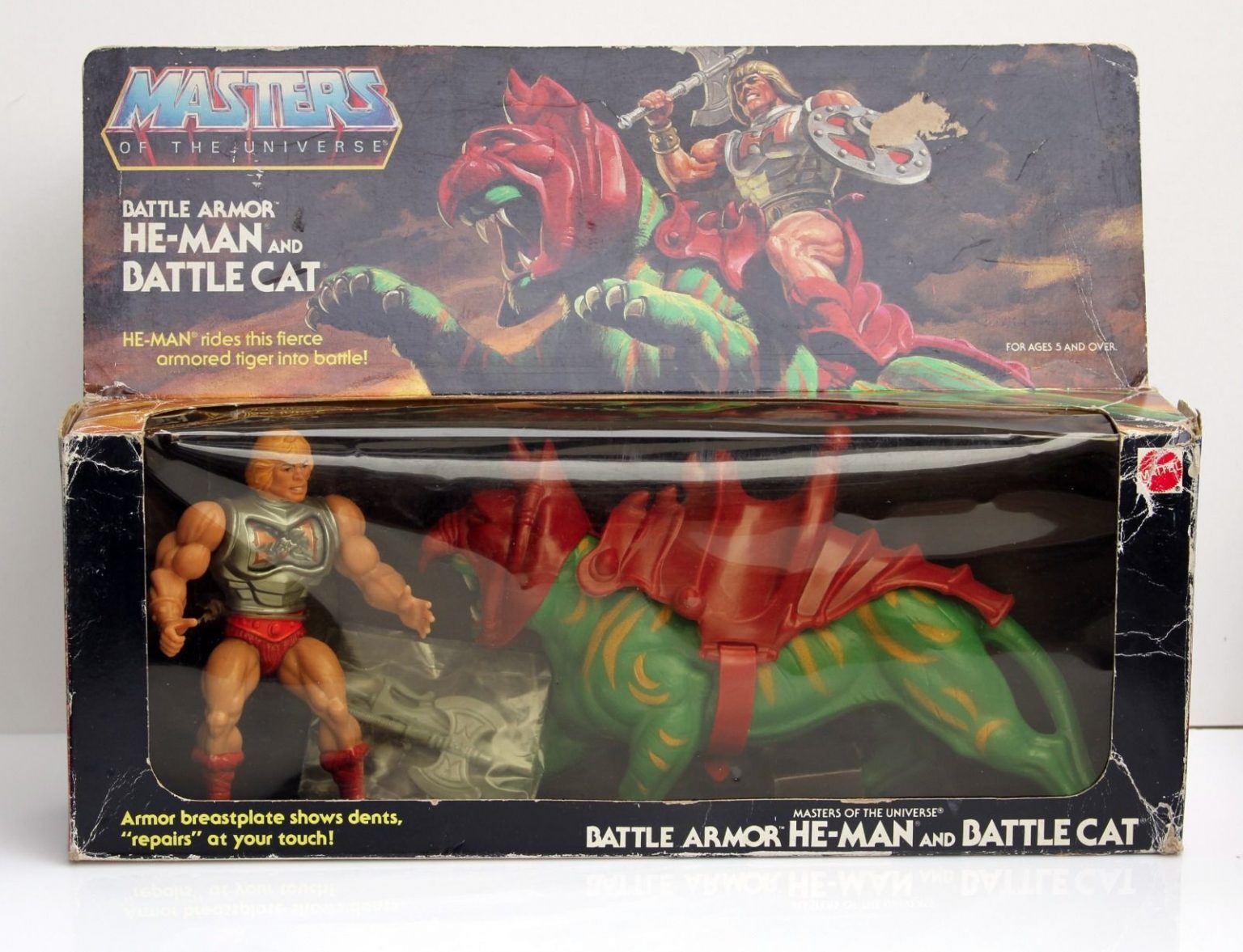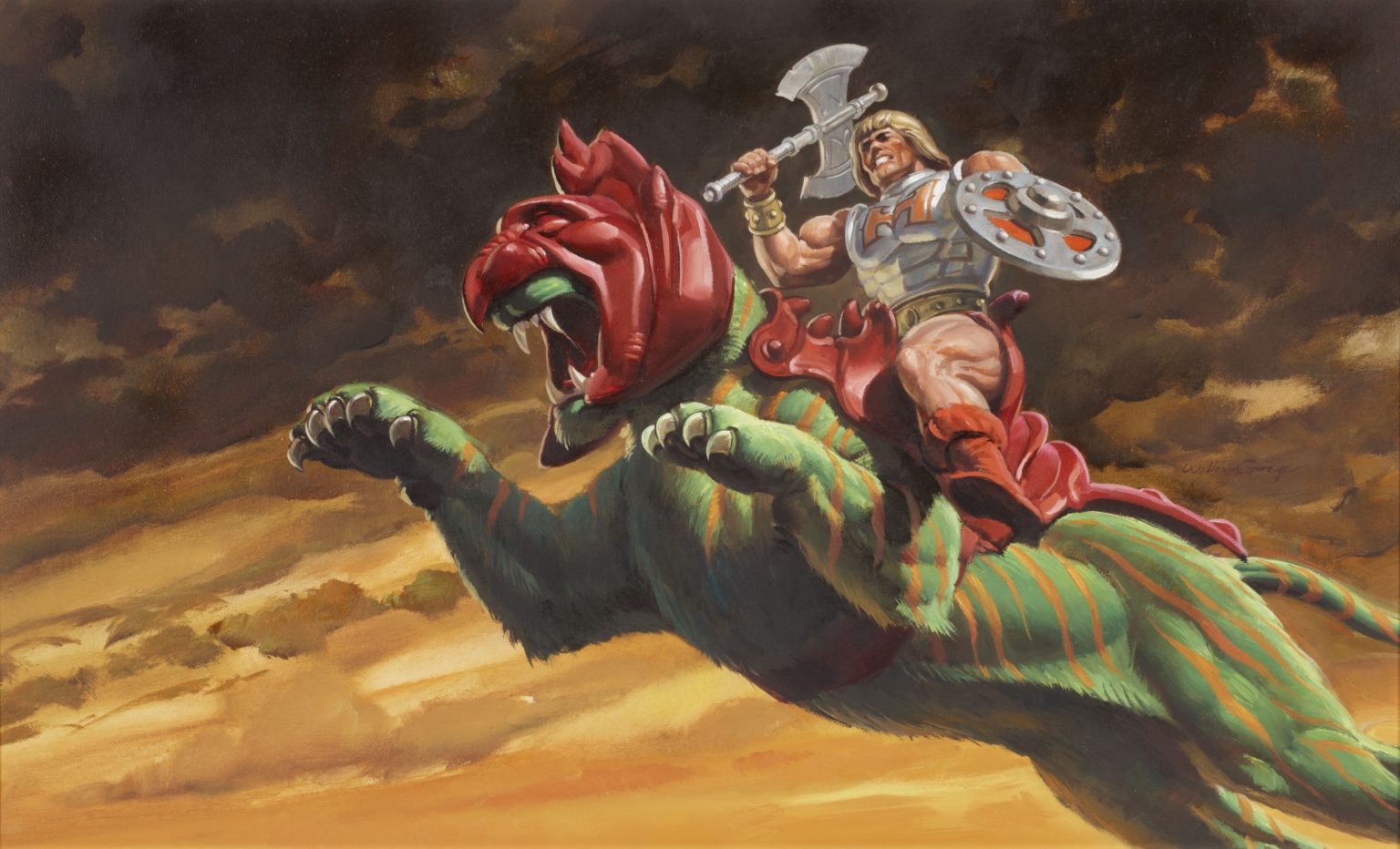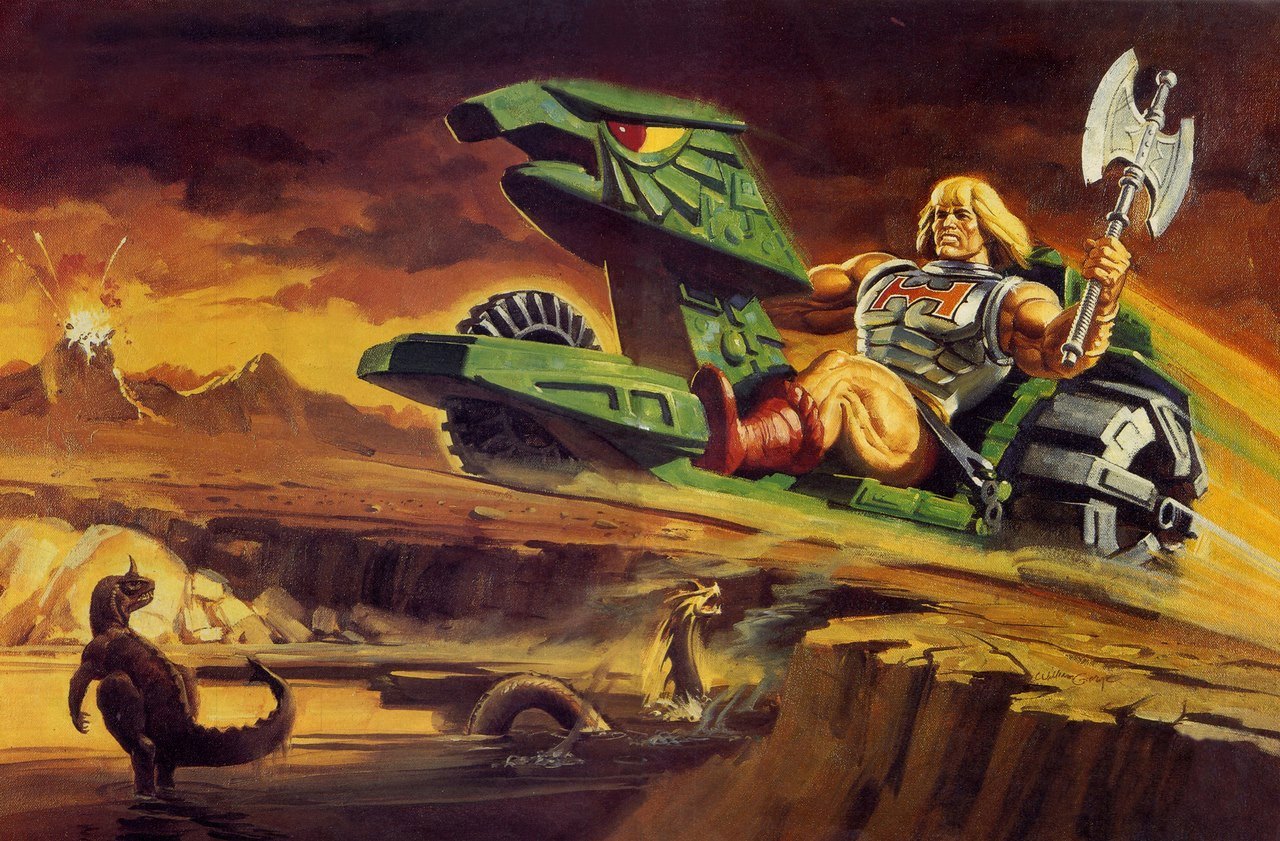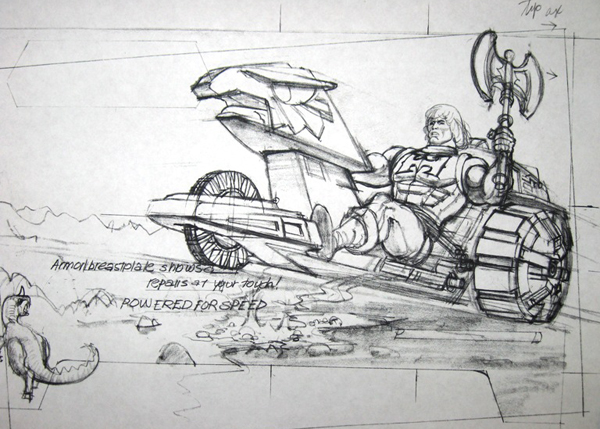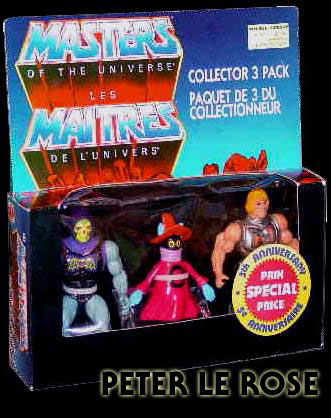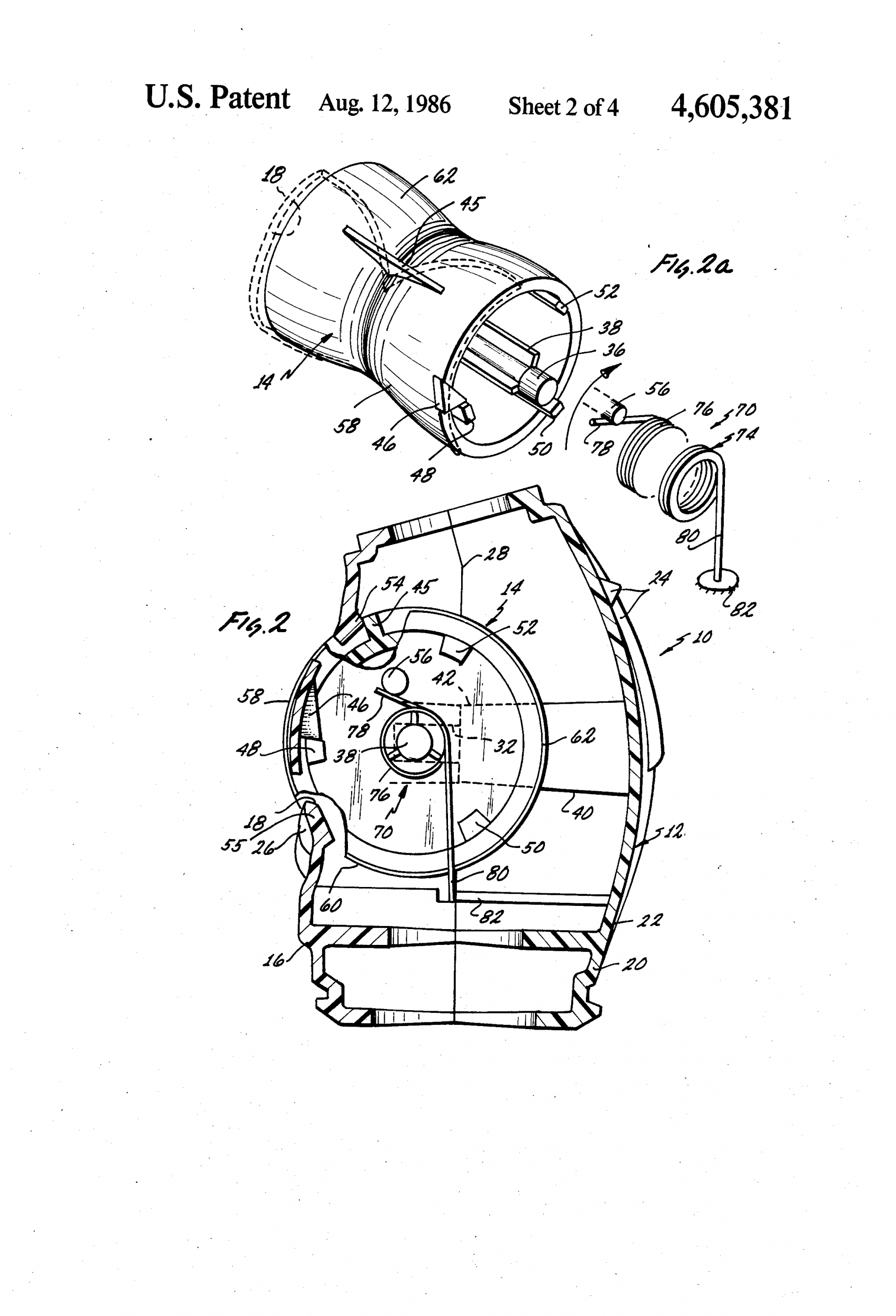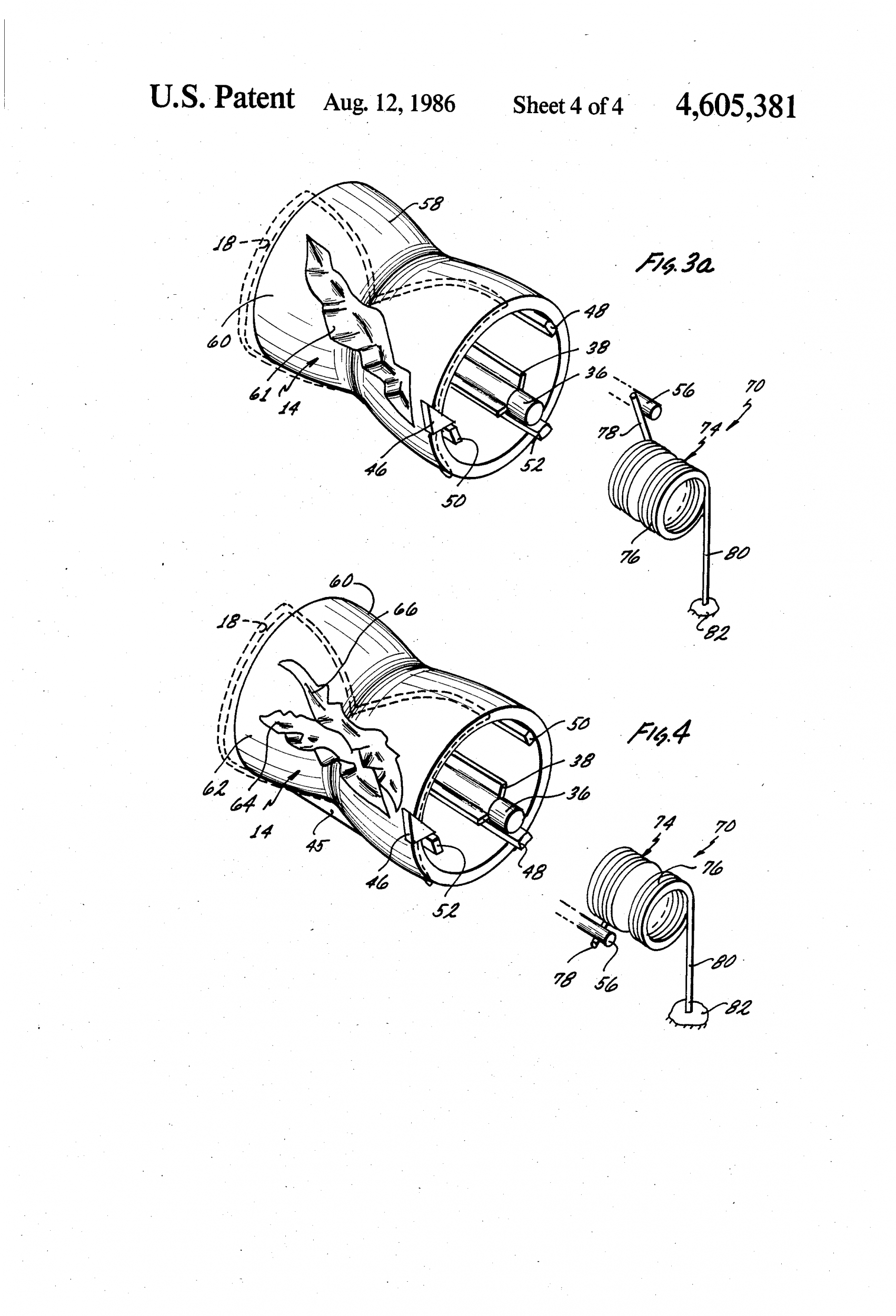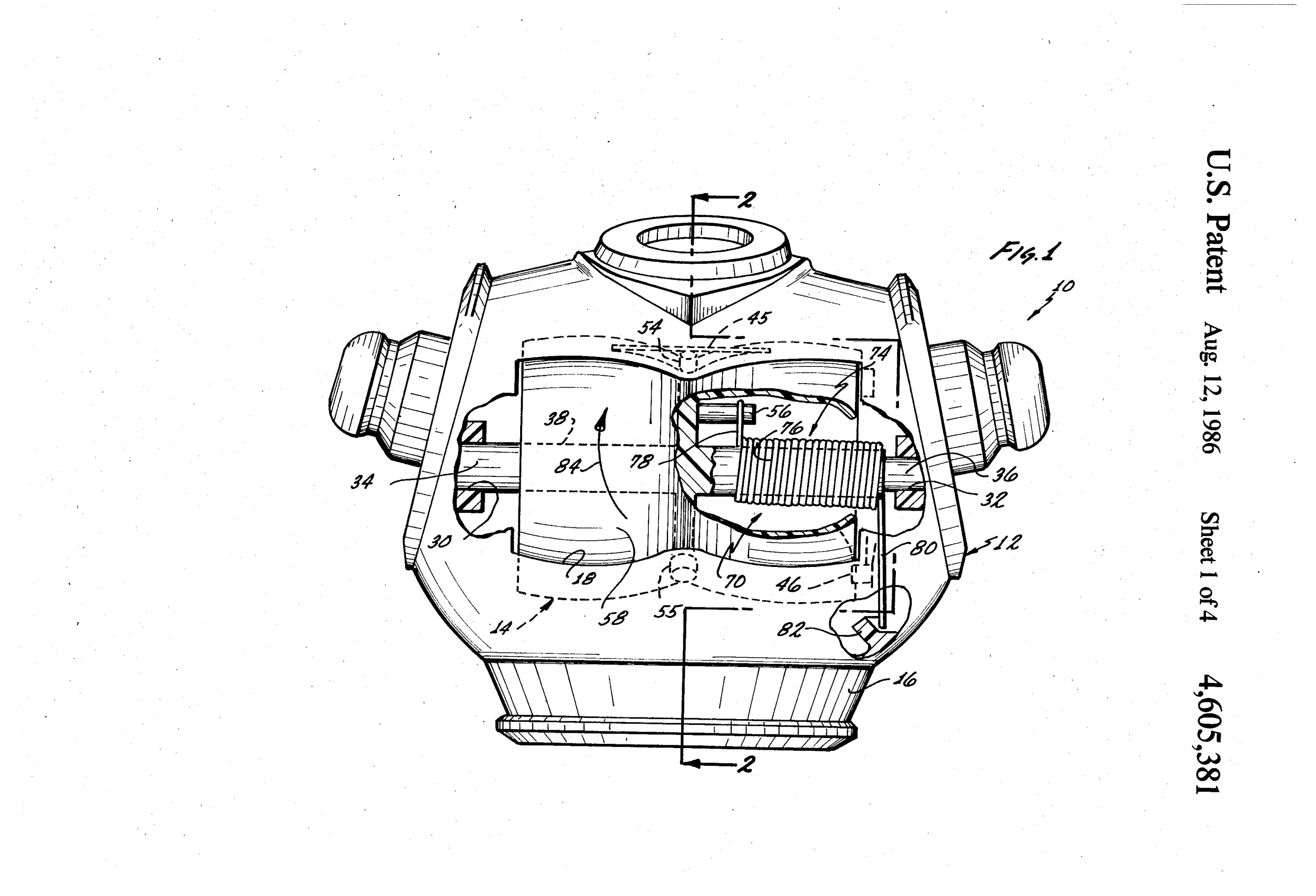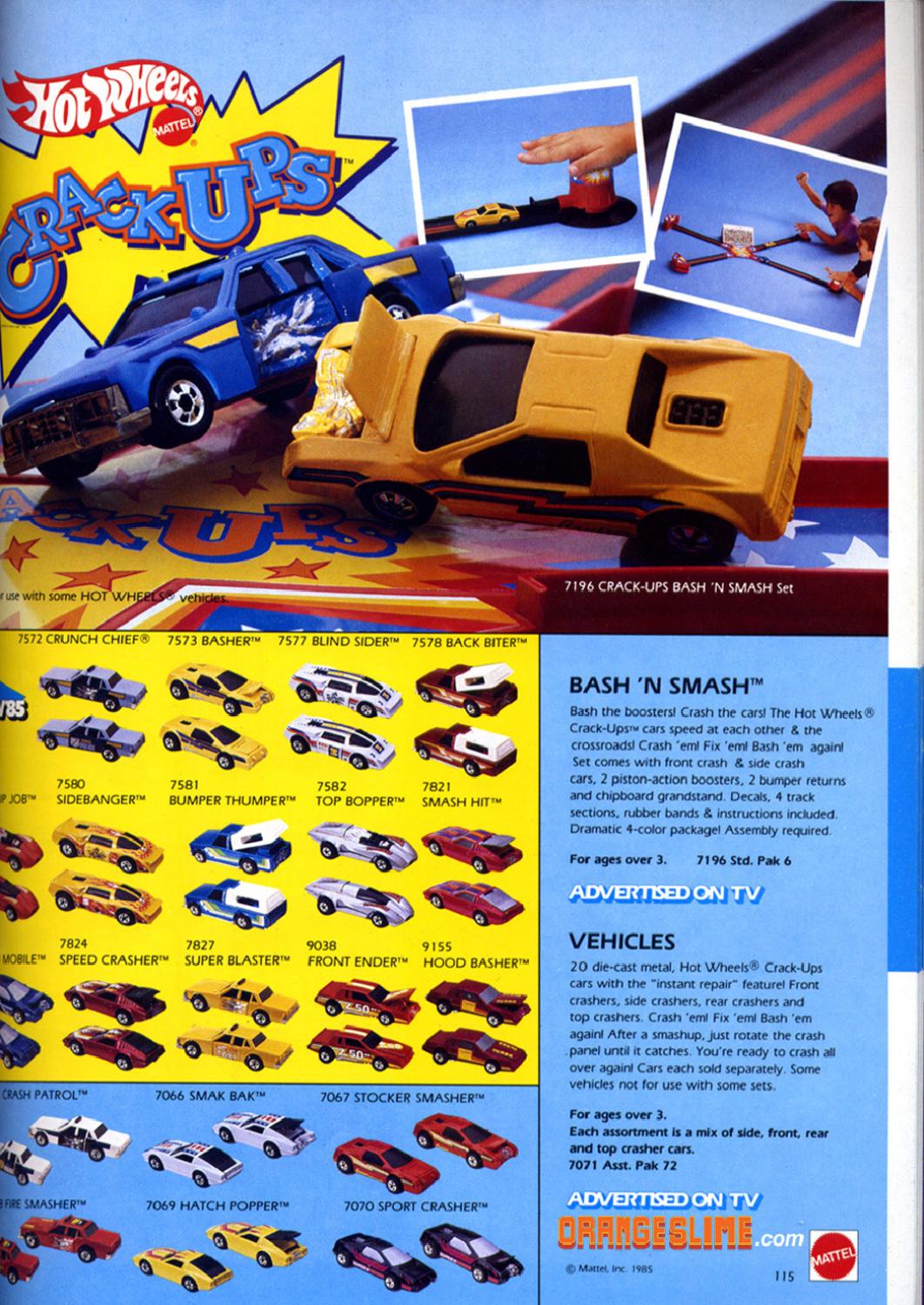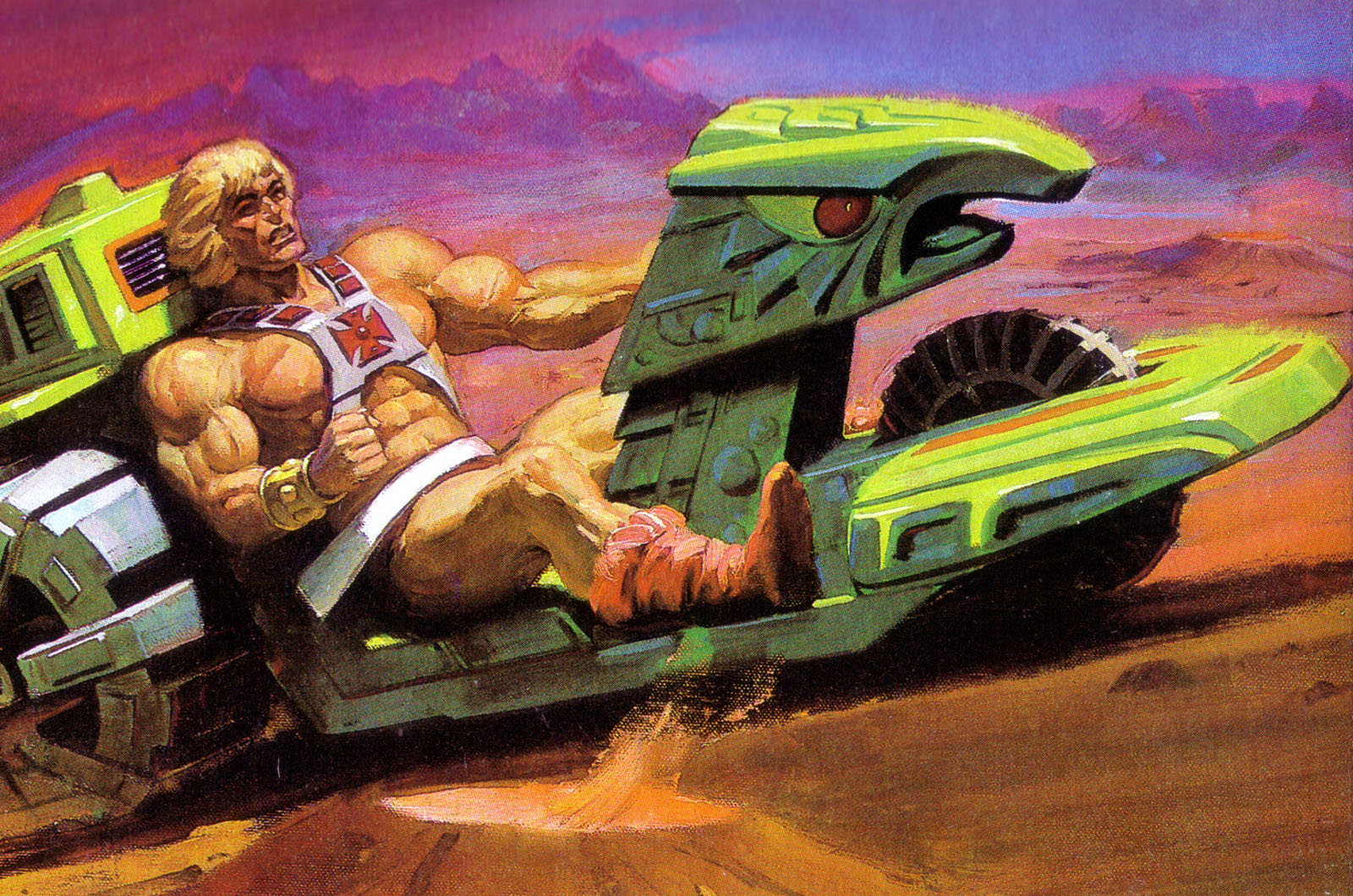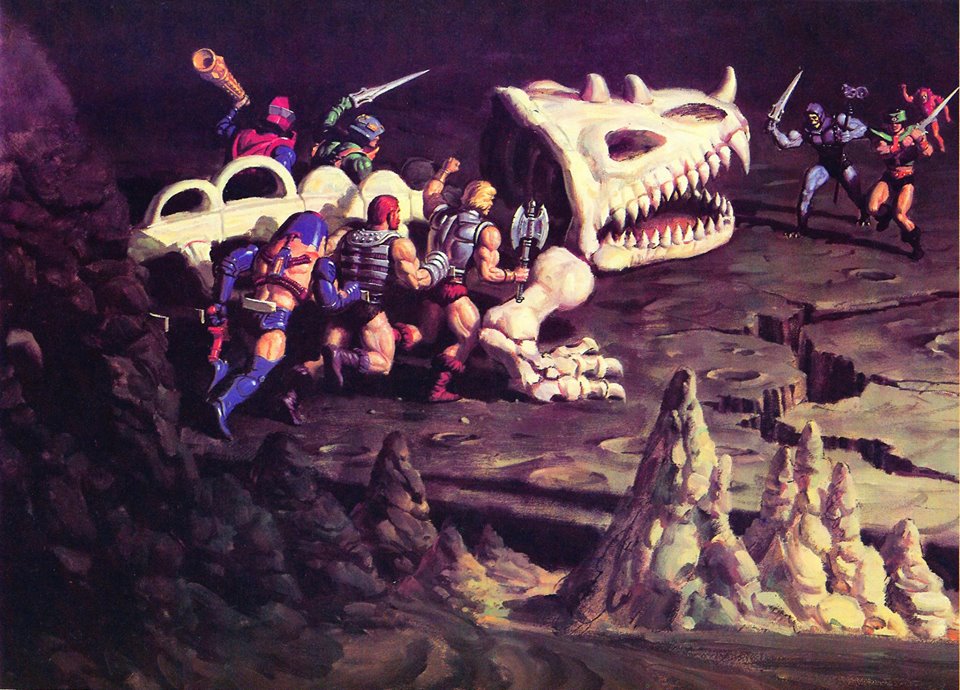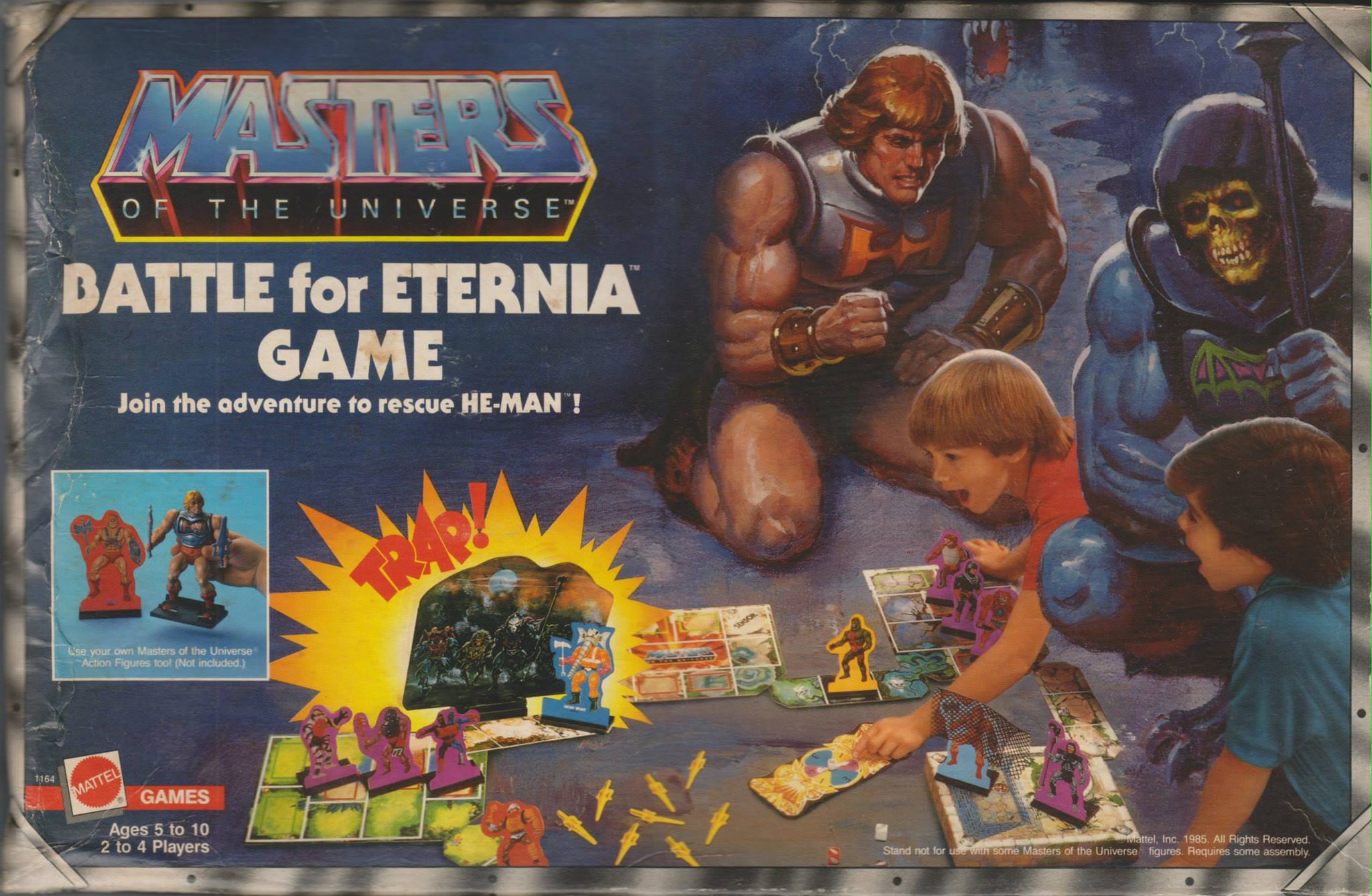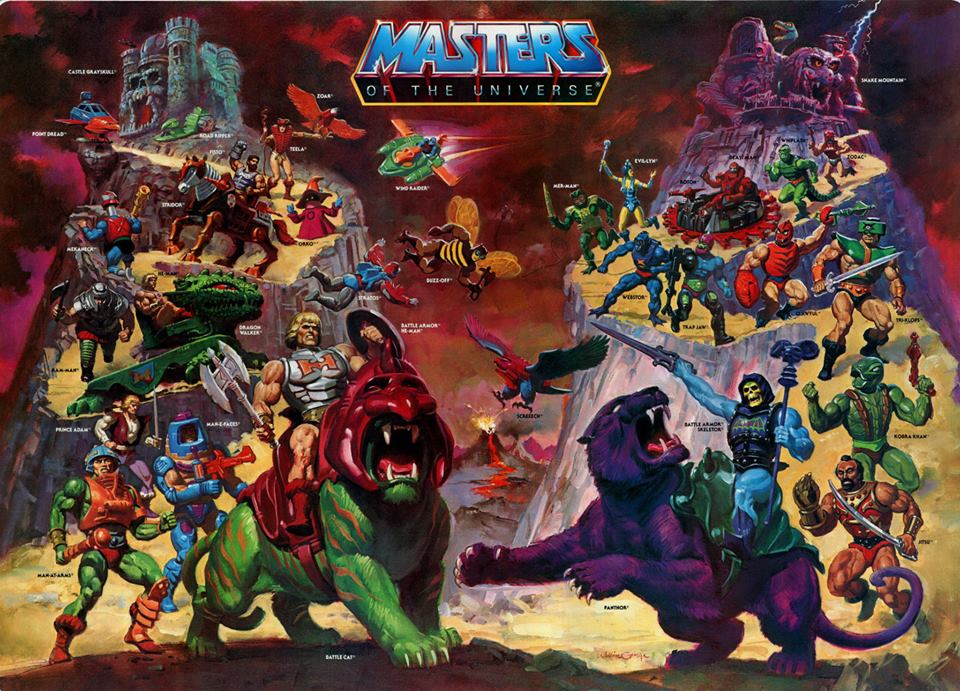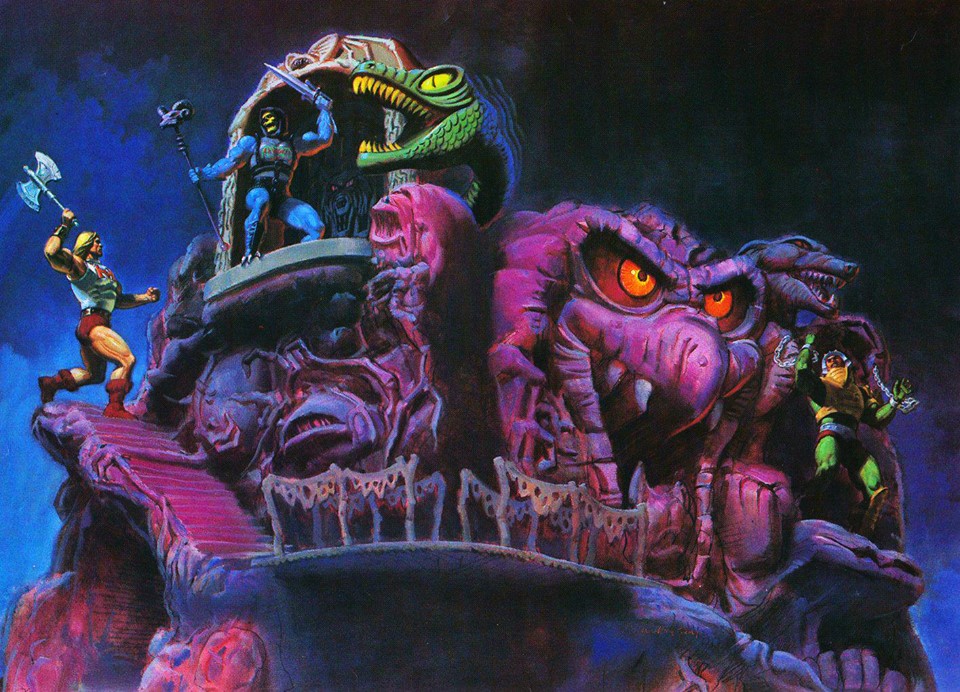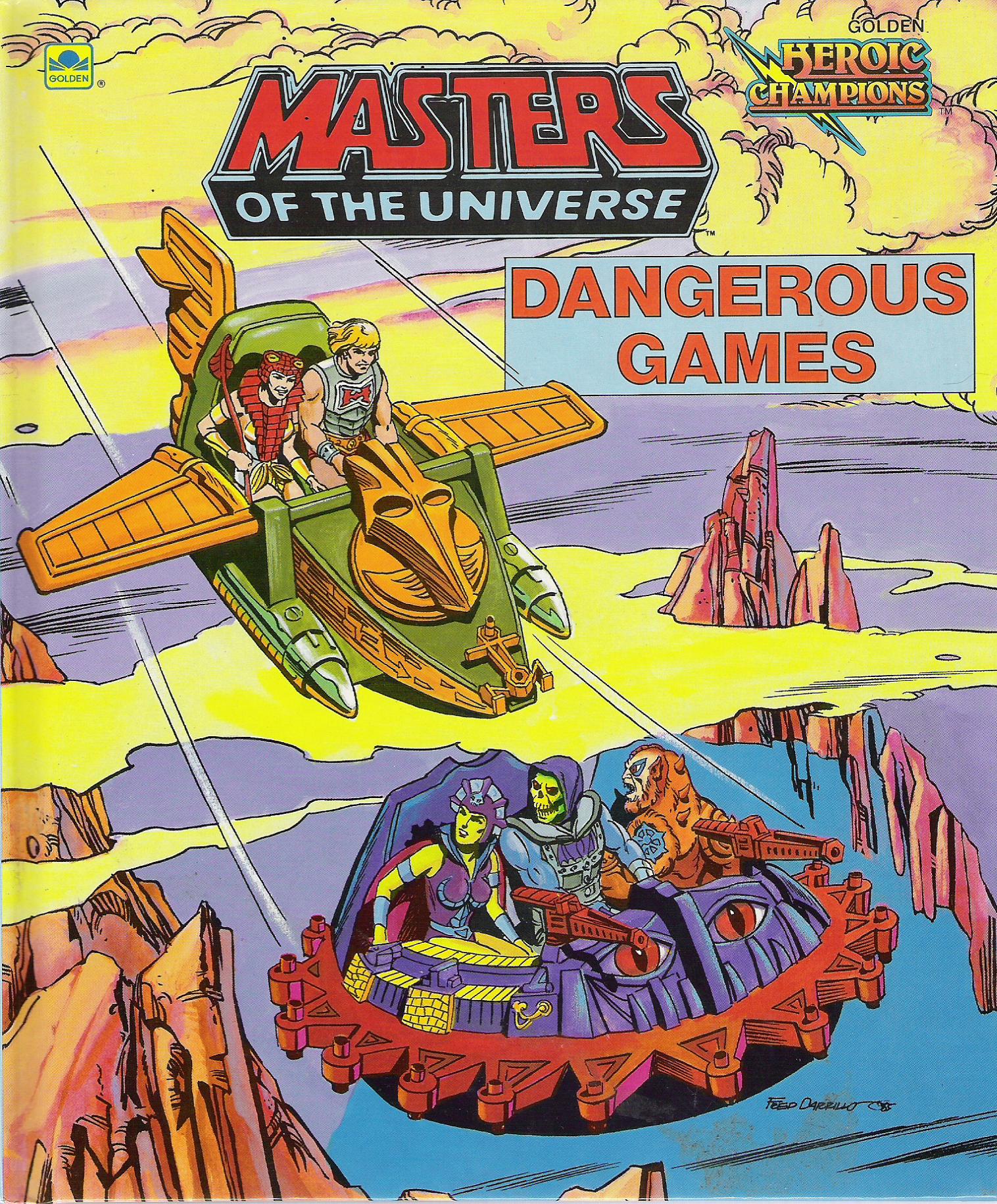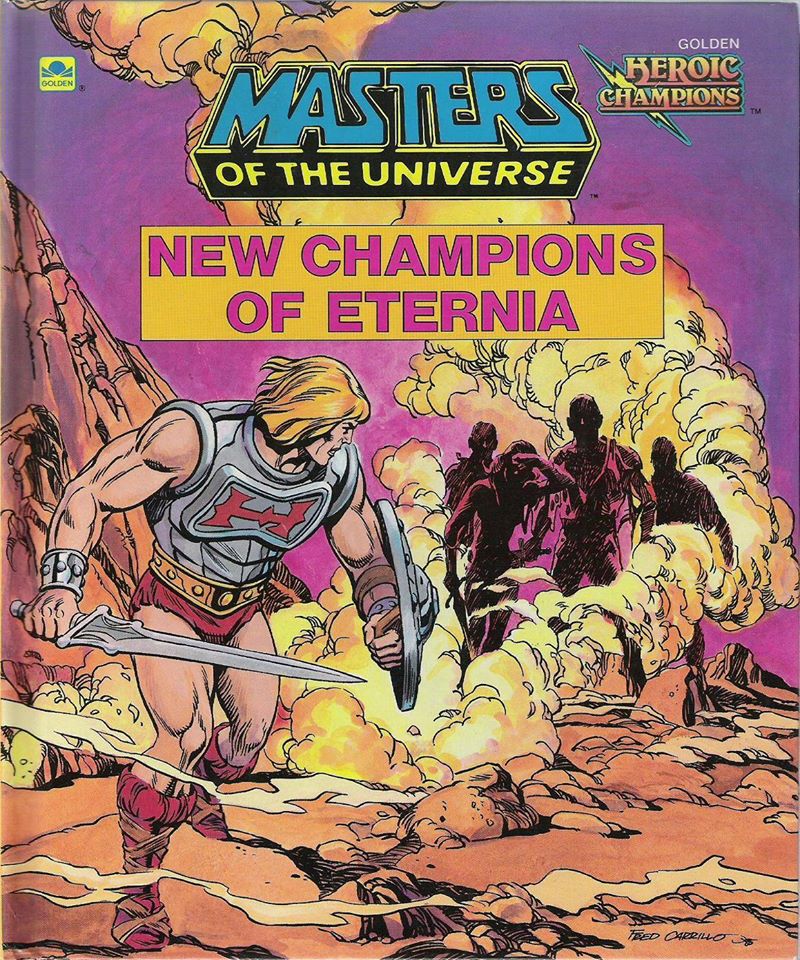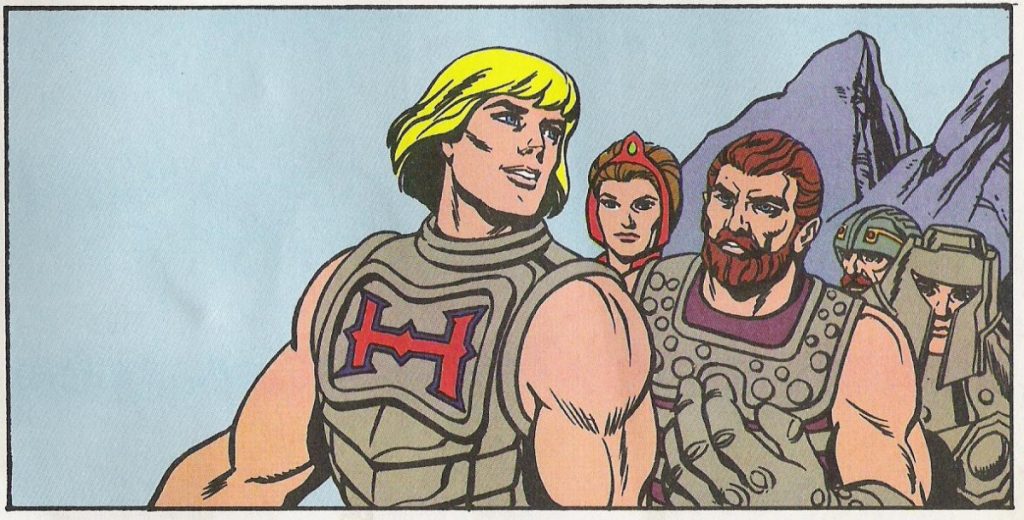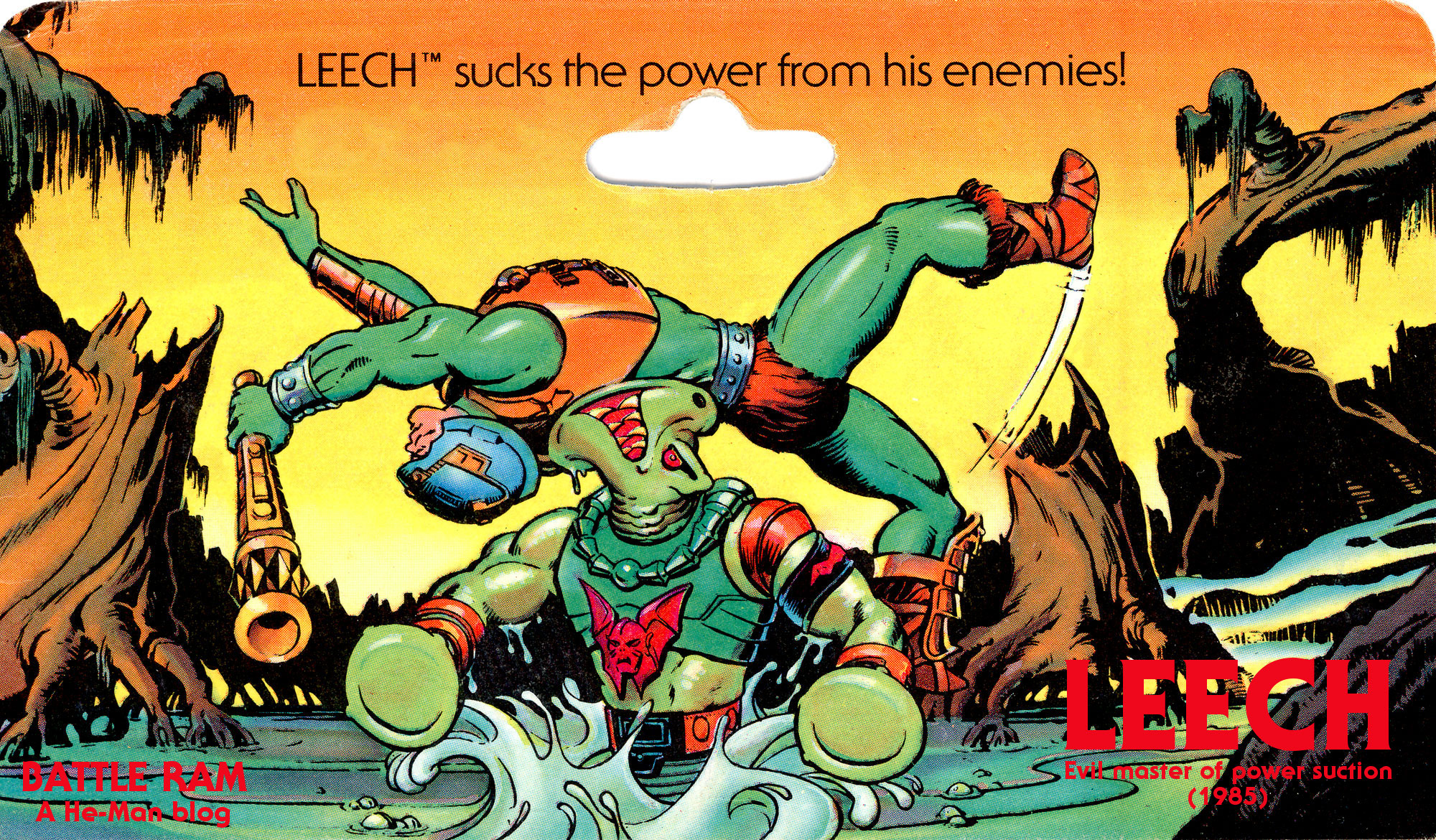
Leech is one of those figures that that is permanently etched in my memory. I got Leech and Mantenna for Christmas of 1985 (my brother got Grizzlor). At the time I was just starting to get distracted away from Masters of the Universe by G.I. Joe. I remember my cousin making the argument that G.I. Joe was cooler than He-Man because you could “put them in better poses.” I wasn’t terribly interested in army toys, but I looked up to my cousin and was easily swayed by his opinions. By 1986, Hasbro was putting out G.I. Joe figures that were much more colorful and weird, maybe in an effort to attract the attention of He-Man fans (it certainly worked on me). In any case, getting Leech and Mantenna sucked me right back in to the world of He-Man.

Masters of the Universe had long been a toyline filled with colorful, freakish monsters, but the Evil Horde took the bizarro factor to a whole new level, and Leech was an instant favorite. An evil green monster with suction cups for hands and a suction cup mouth? Sold! Leech reminded me of the salt vampire from the original Star Trek series – the creature also had a sucker face and suckers on its hands. That episode gave me a serious case of the creeps as a kid, so to have something a little like it in figure form was thrilling.


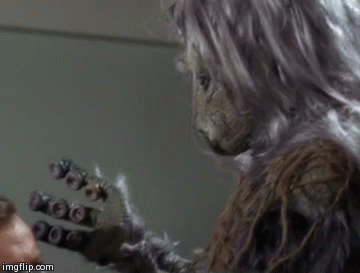
Leech was not the first suction cup monster to be sold by Mattel. In 1980, Mattel released a character called Suckerman (invented by Roger Sweet), covered head to foot in suction cups and made from a flexible vinyl material:
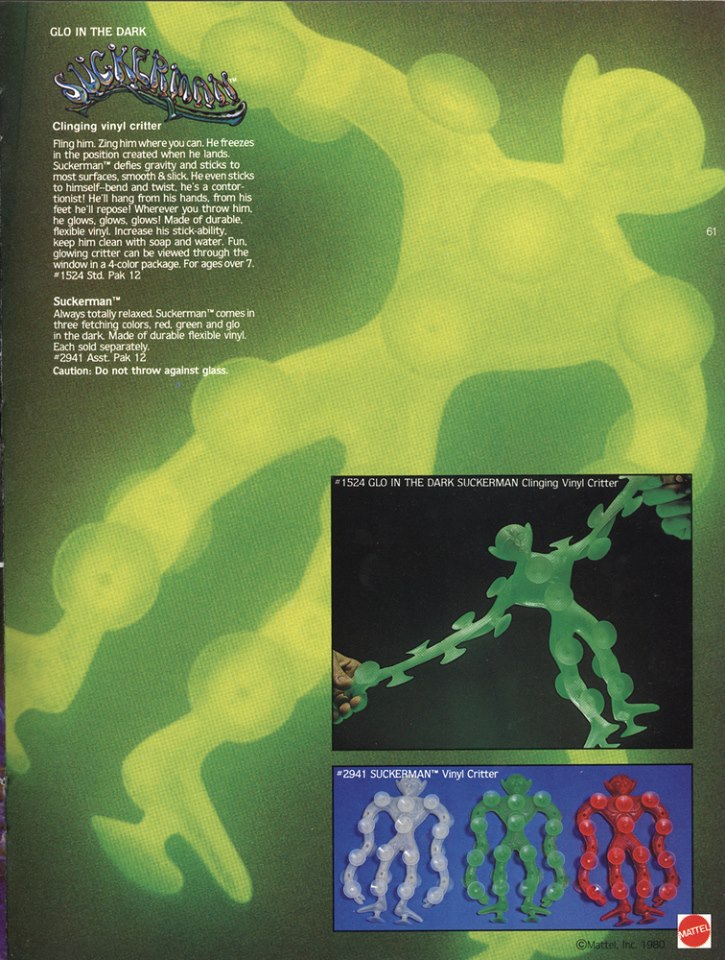
There are a couple early concepts for Leech, one from Filmation and the other from Mattel. My understanding is that the Evil Horde concepts originated from Filmation, and the Mattel would often take them in a different direction.
Several years back, James Eatock shared an early Leech concept created by Charles Zembillas. This incarnation of Leech was not quite the freak show character he ended up being. In fact, stylistically he fits right in with the type of character designs Mattel had put out in 1984 for the Evil Warrior faction:
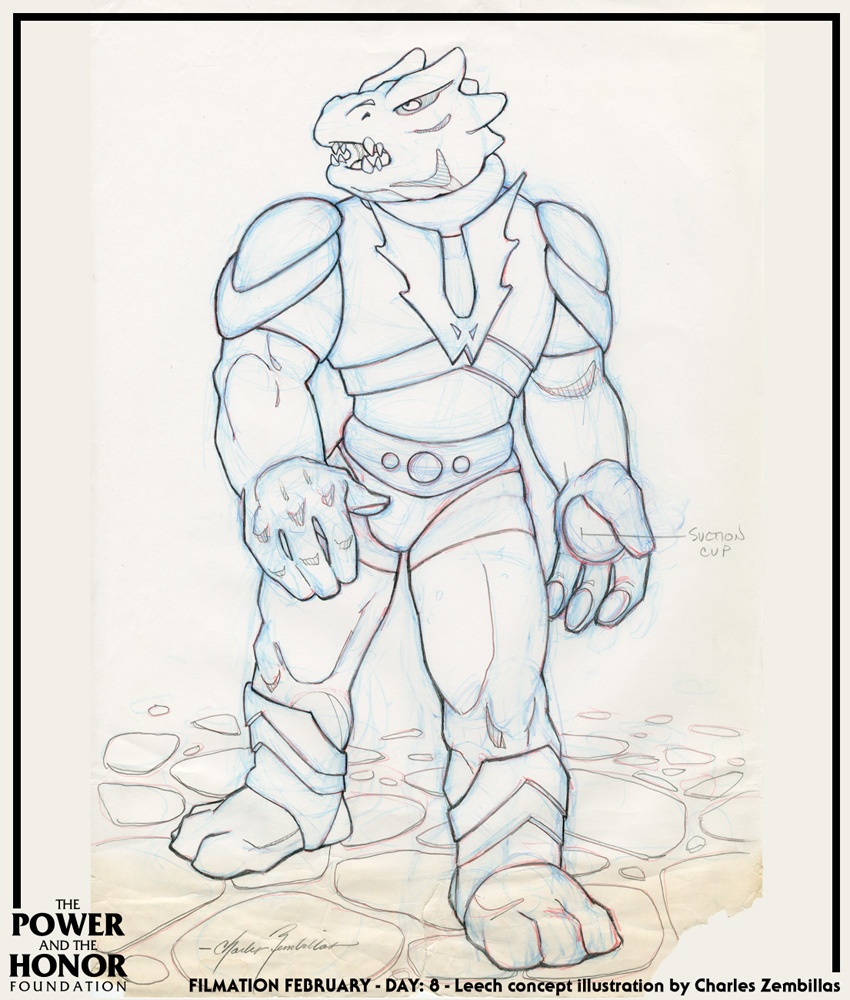
Back at Mattel, designer Ted Mayer took the concept in a much different direction. Ted’s concept (below) presents a character that is much more alien looking, with more prominent suction cup hands and a face also dominated by a giant suction cup. Leech’s limbs here are much slimmer than the actual figure, but this design is otherwise much closer to the toy design than the Zembillas drawing.
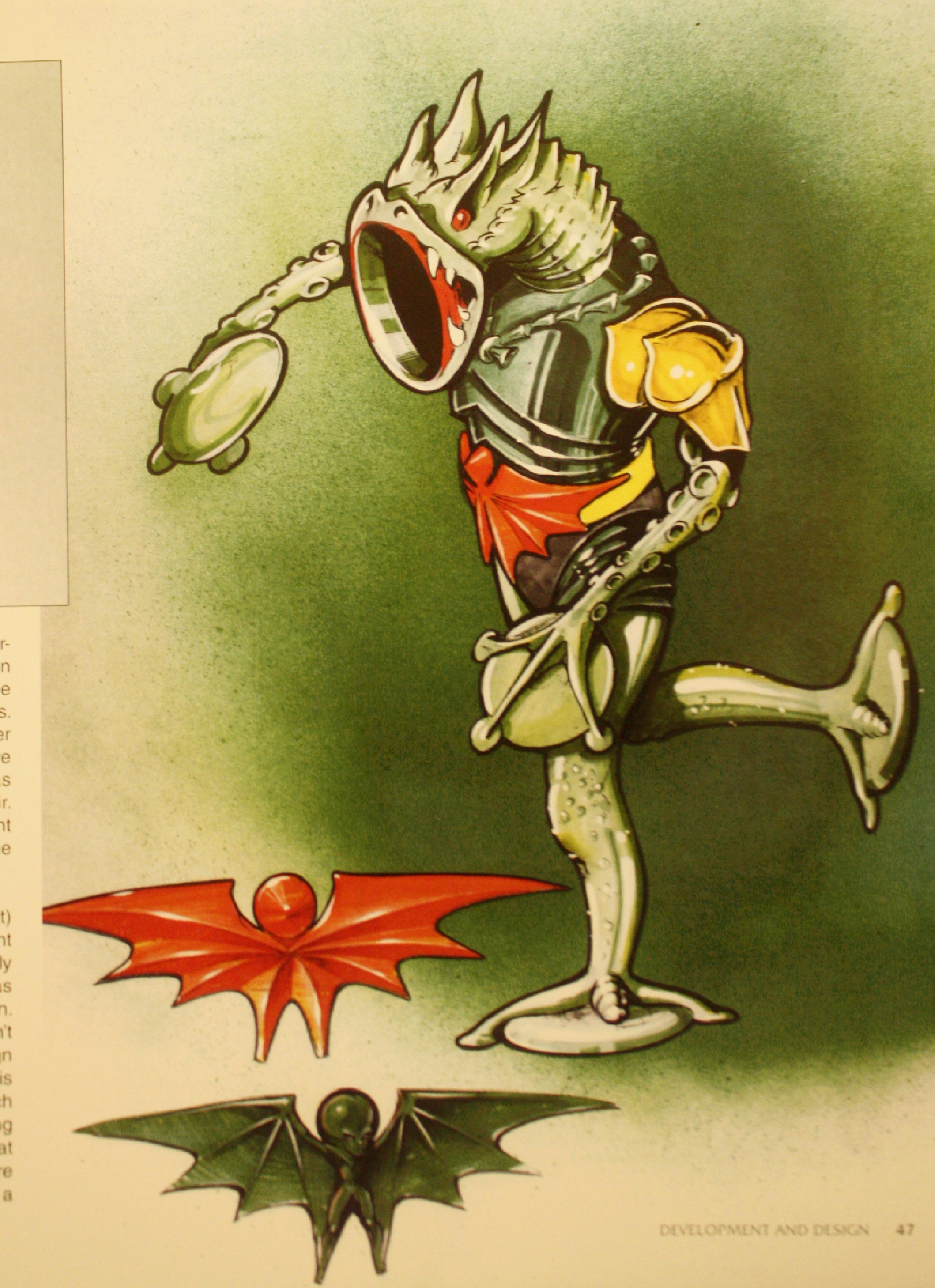
Image source: The Power and the Honor Foundation Catalog, Vol 1
As noted in The Power and the Honor Foundation catalog (image above), the Horde insignia on Leech and the rest of the Evil Horde was originally envisioned as an alien creature that controlled these monsters. It was an interesting idea, but it was ultimately dropped.
This close to final prototype (sculpted by Eddy Mosqueda, who also worked on Grizzlor, Sssqueeze and Eldor) appeared in the 1985 Mattel Dealer Catalog. The sculpt is final, and the figure appears to be hand-painted. As you can see, the prototype lacks the painted teeth and tongue inside his suction cup face. The suction cup itself is shallower than the final version, and lacks the wide rim on the toy (thanks to Manic Man for pointing that out). Unlike the final toy, the armor covering his left shoulder is painted orange, and the Horde bat insignia on his left arm is painted red. He also has black nostrils.
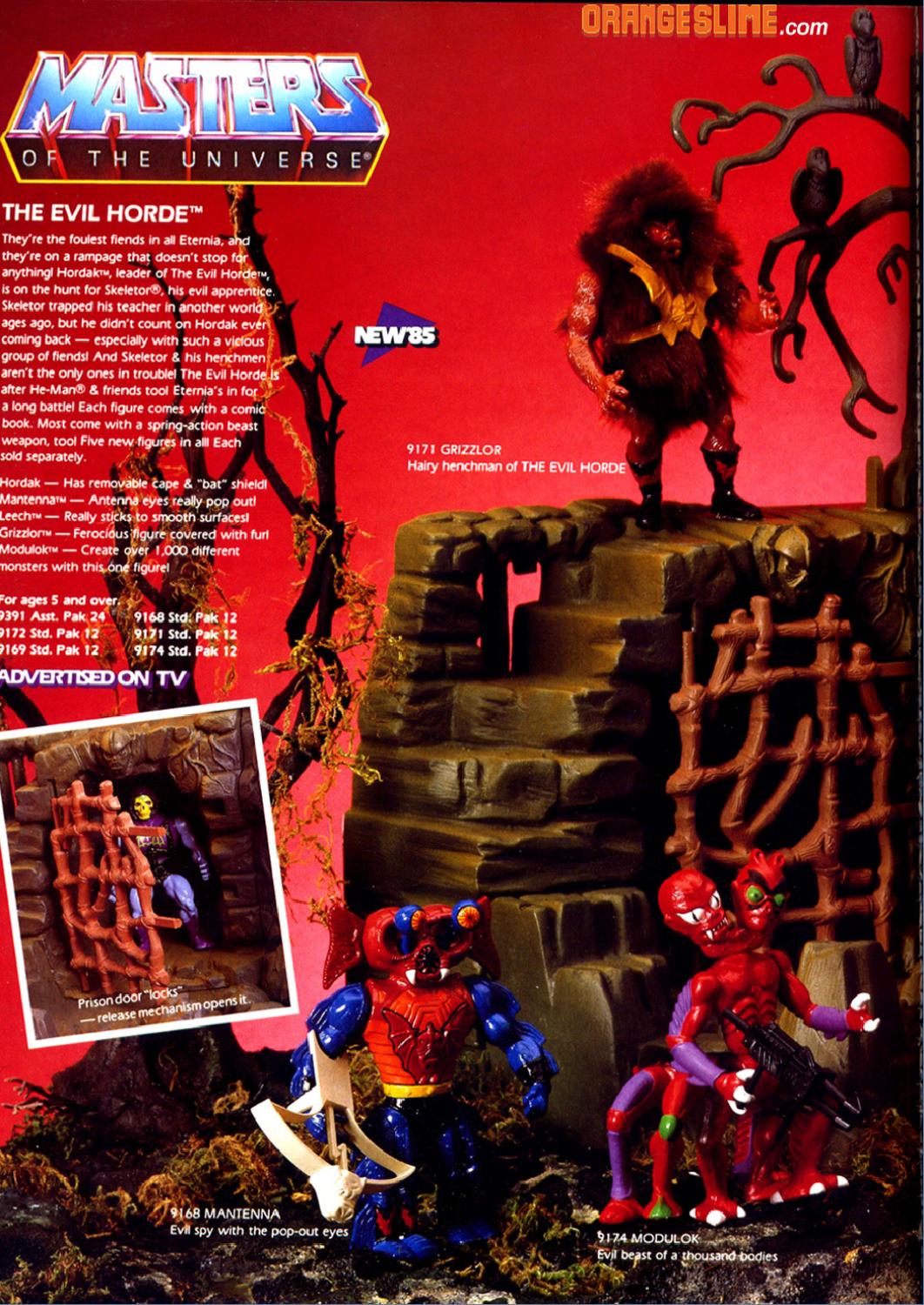

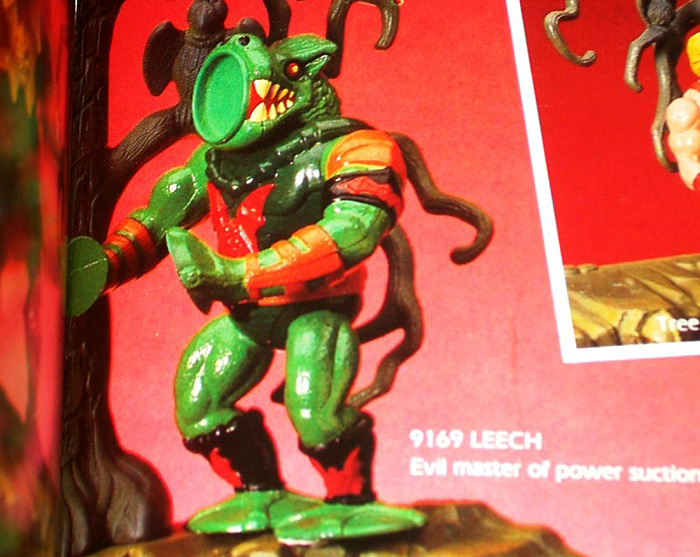
Compared to most other MOTU figures, leech was much more solid and bulky. His action feature required a fairly large torso. The suction cups on his hands (which never seemed to work all that well) were typical suction cups other than the sculpted finger details, but the suction cup on his mouth actually had a hole in the middle of it, with a tube leading down to a rubber bladder in the center of Leech’s torso. A button on the figure’s back would force the air out of the bladder through the hole in Leech’s mouth. This would create a vacuum in the bladder, resulting in a stronger suction force to better keep the figure attached to smooth surfaces.

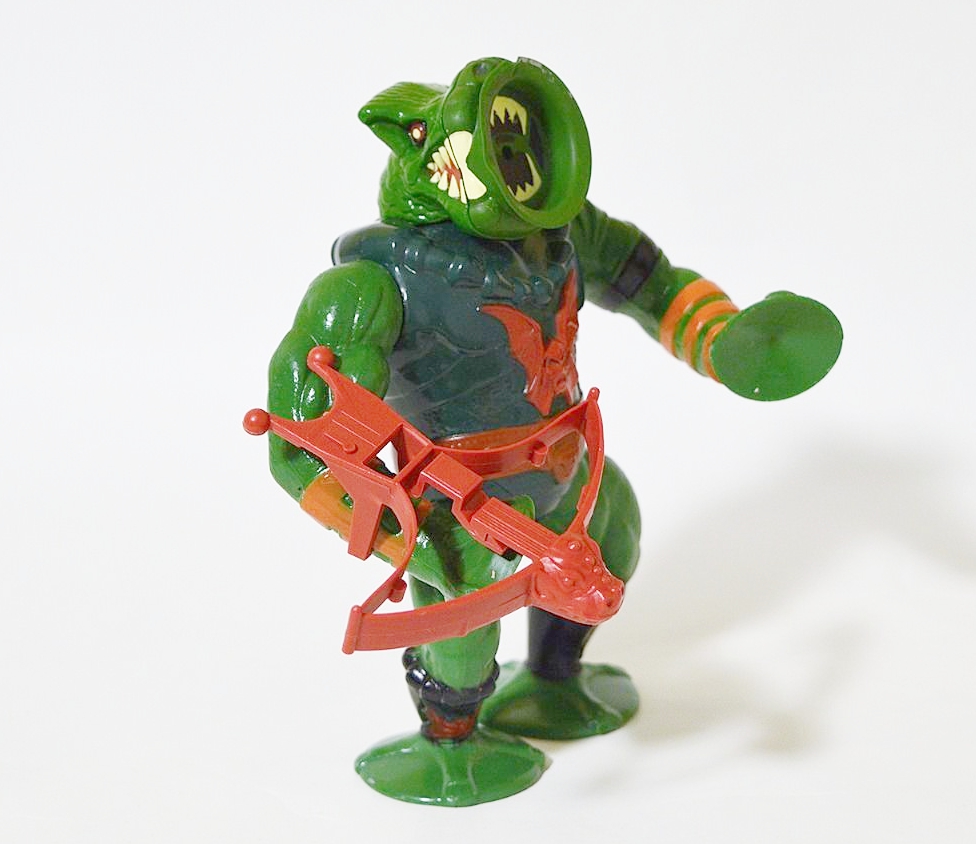
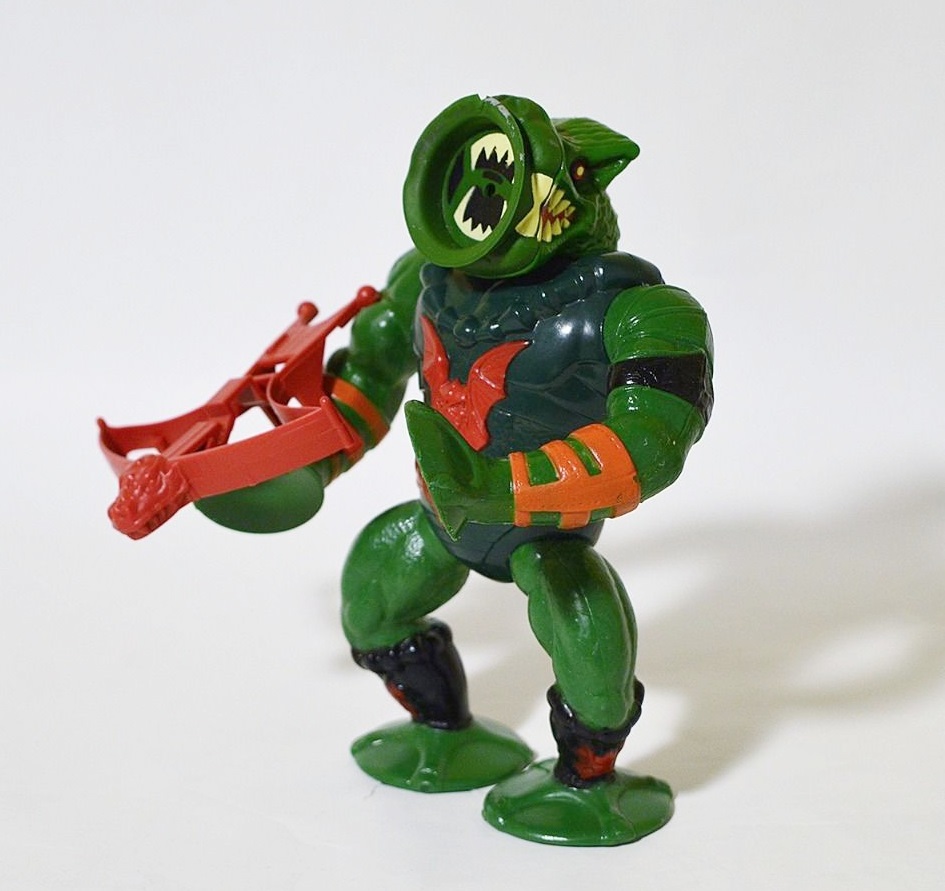




In the scene above, Man-At-Arms is holding Mekaneck’s club. Leech is based on his prototype, with black belt buckle and painted orange shoulder armor.

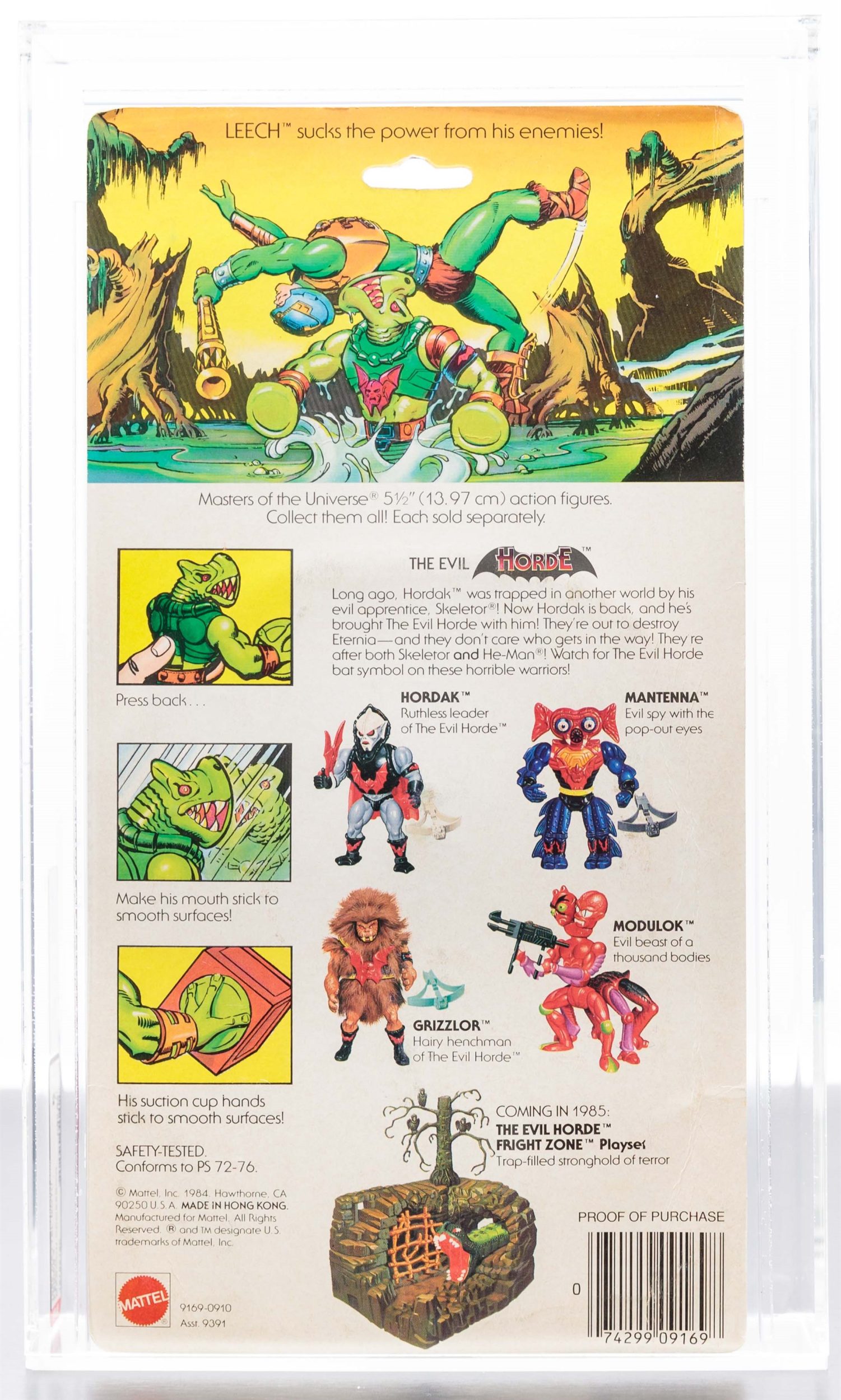
There are a several different production variants for Leech, the most notable being the version with a black belt buckle and light green abs. This is likely the first release version of Leech, as it is closest to the cross sell artwork (and the prototype figure that the artwork was based on):



Aside from his single carded release, Leech was also sold in a J.C. Penny two-pack with Mantenna. There was also a planned three-pack with Hordak and Mantenna, but as far as I know no one has seen one in the wild.
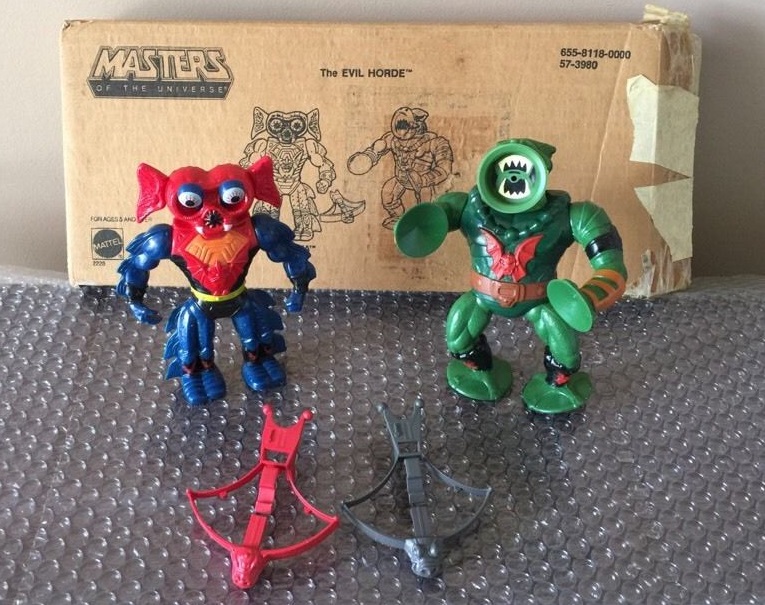
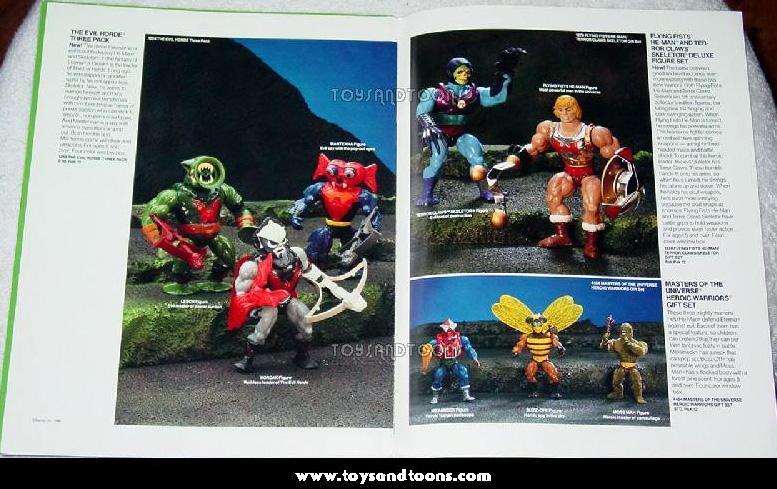
Image via Grayskull Museum
The mini comic that came with Leech is no doubt the strangest piece of the entire series. In the story, Mer-Man (who is inexplicably bearded) is running in terror from Leech, who in this story is the size of the mountain, but has undersized two-fingered hands. Sy-Klone manages to temporarily defeat Leech (delivered with one of the best quips of all time – “Try a taste of knuckle sandwich, blubber gut”), and the heroes take the frightened Mer-Man back to the palace to discuss the new threat with King Randor (who has a pink beard, because why not?).

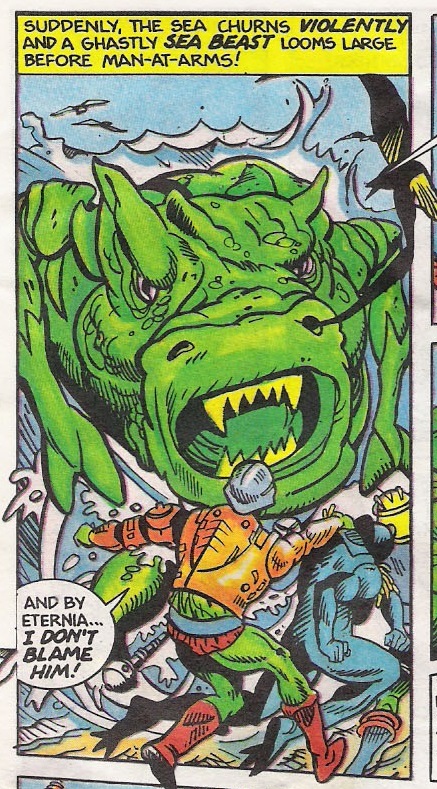


As I said before, Leech is a giant behemoth in this comic. When he returns to Hordak empty-handed, it’s clear that Hordak is human-sized. However, when He-Man takes on Hordak in the Talon Fighter, Hordak is also giant-sized. Reading this comic as a kid, I assumed that both Leech and Hordak had the power to grow or shrink at will. I’m not sure if that was actually a power they were intended to have, or if this comic book can best be explained by the effects of a bad acid trip. Either way, I was left scratching my head. Still, for some time afterward I believed that Leech had this ability, and when I had him facing off against the Heroic Warriors, I would often pretend that he was a giant.
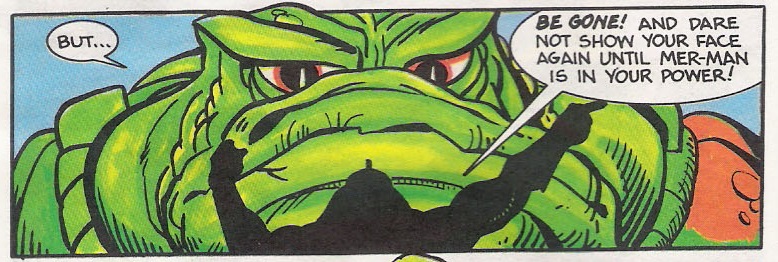


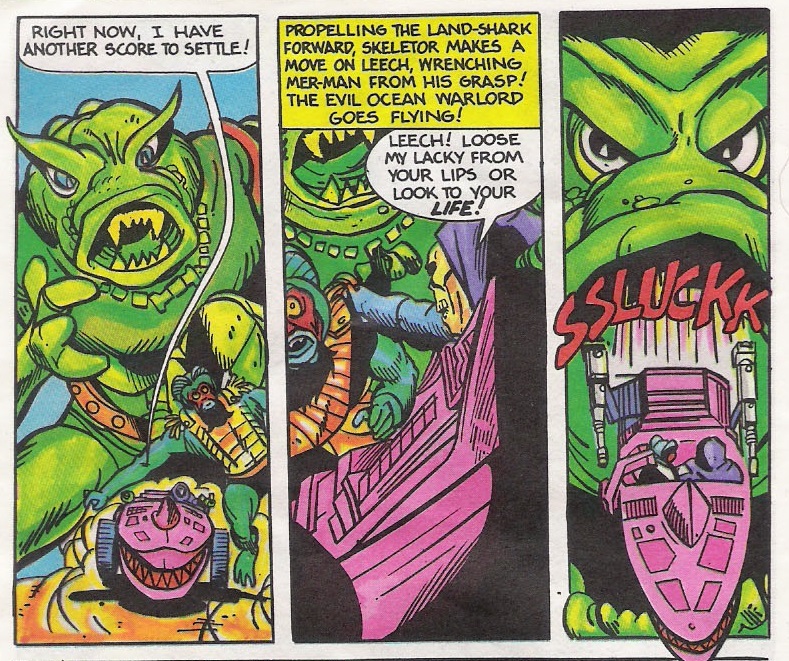
I wasn’t aware until some time later that Leech was actually a frequent character on the Filmation-produced She-Ra cartoon. Certainly there was nothing on Leech’s packaging that connected him to She-Ra in any way.
His appearances were enough to get me interested enough to watch a couple of episodes. It was fun to see Leech in action, but it was also tough as a little boy in the ’80s to admit to being into something that was branded for girls.
The Filmation version of Leech was a bit different from the toy version (and radically different from the Charles Zembillas concept). Compared to the toy he had a more realistic mouth, a yellow belt, and symmetrical yellow shoulder armor.
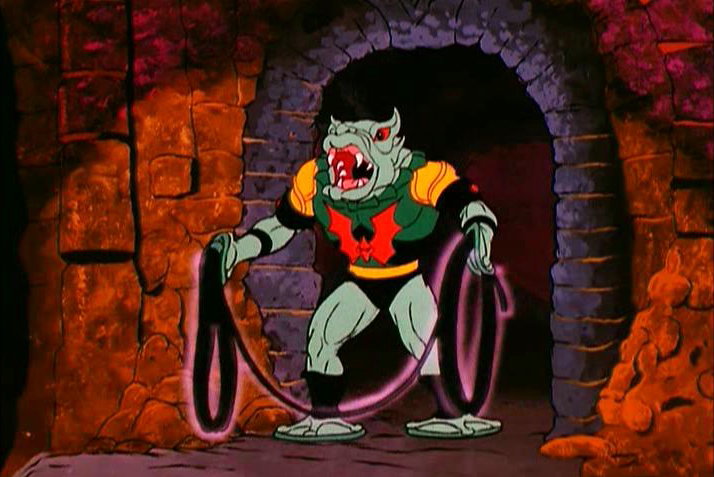
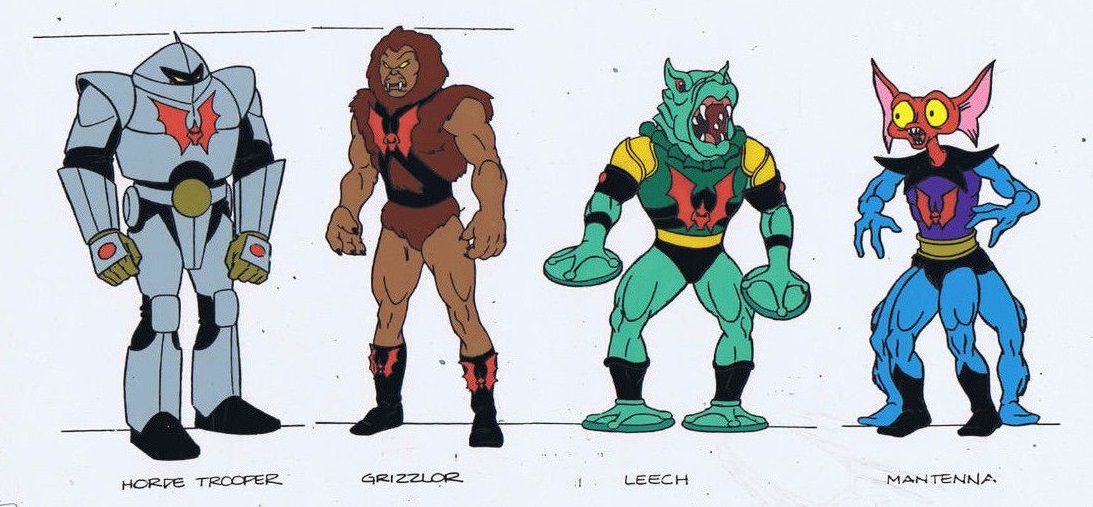
Errol McCarthy’s depiction of Leech was based on the cartoon incarnation:
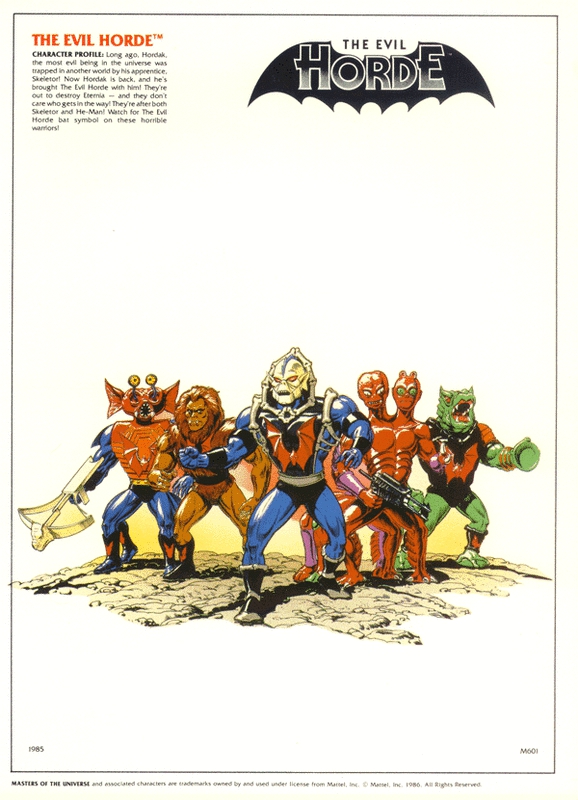

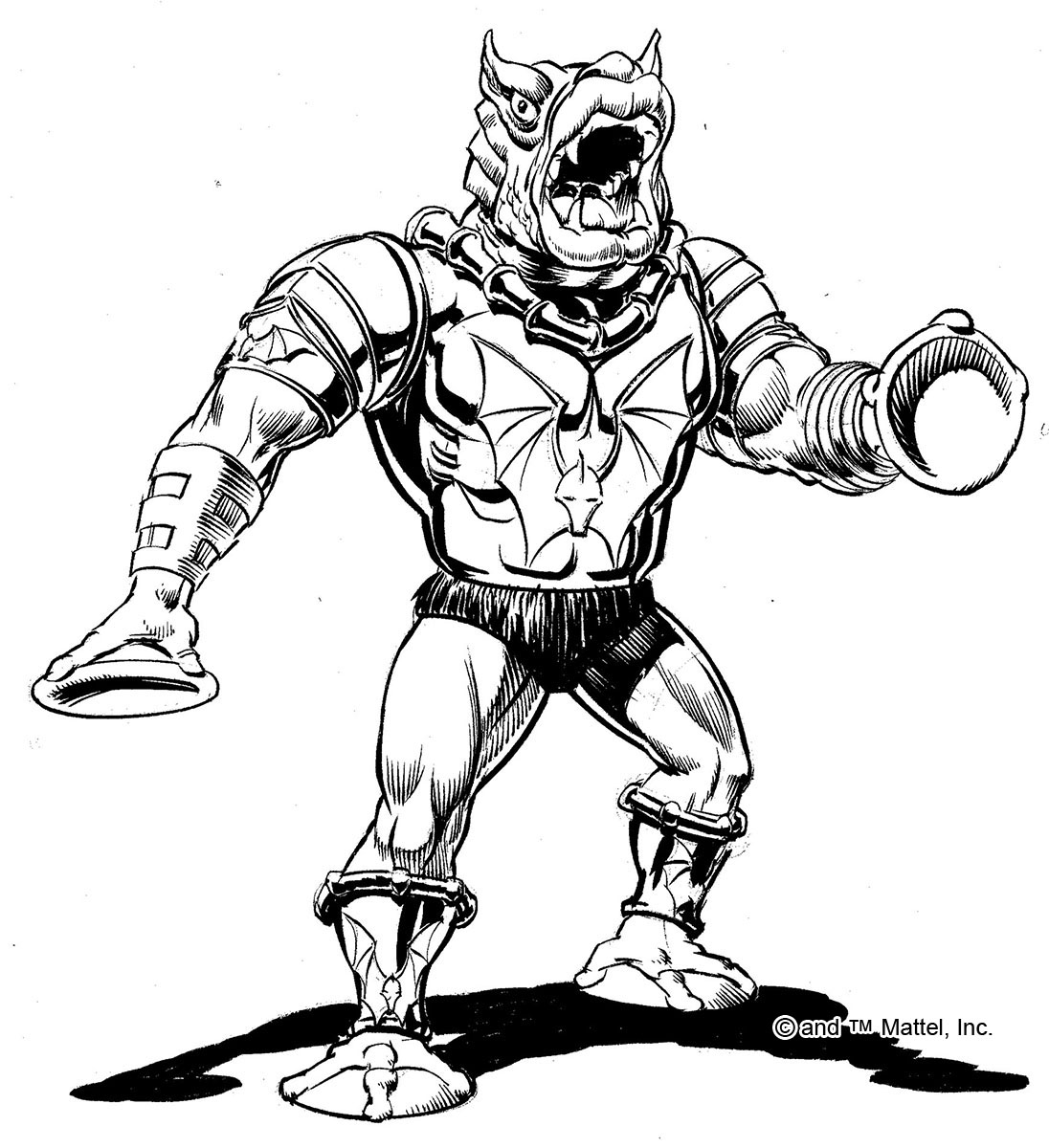
Leech didn’t make any appearances on box art, but he was a background character in several posters by William George, Earl Norem, and others (images courtesy of Jukka Issakainen):
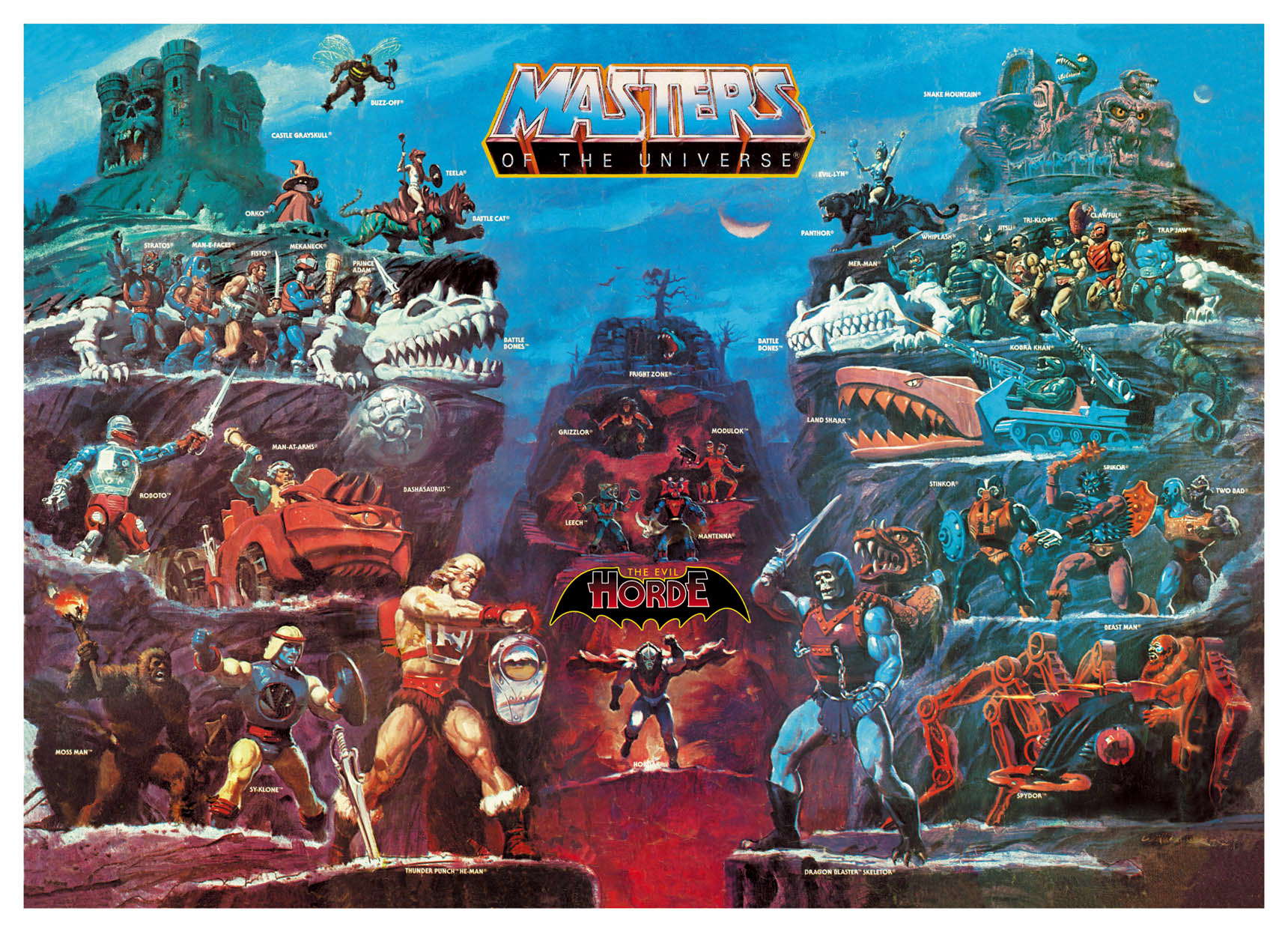
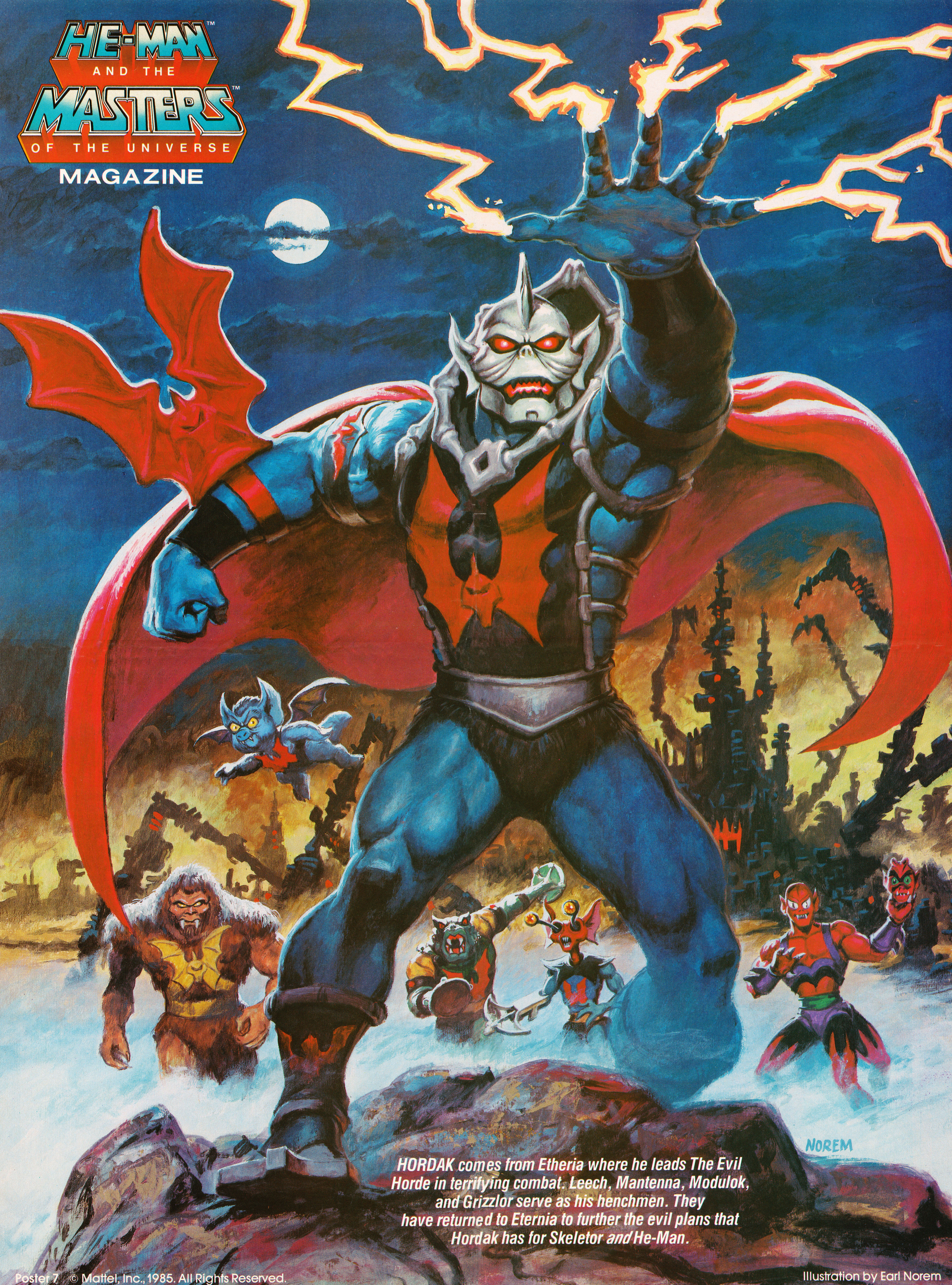
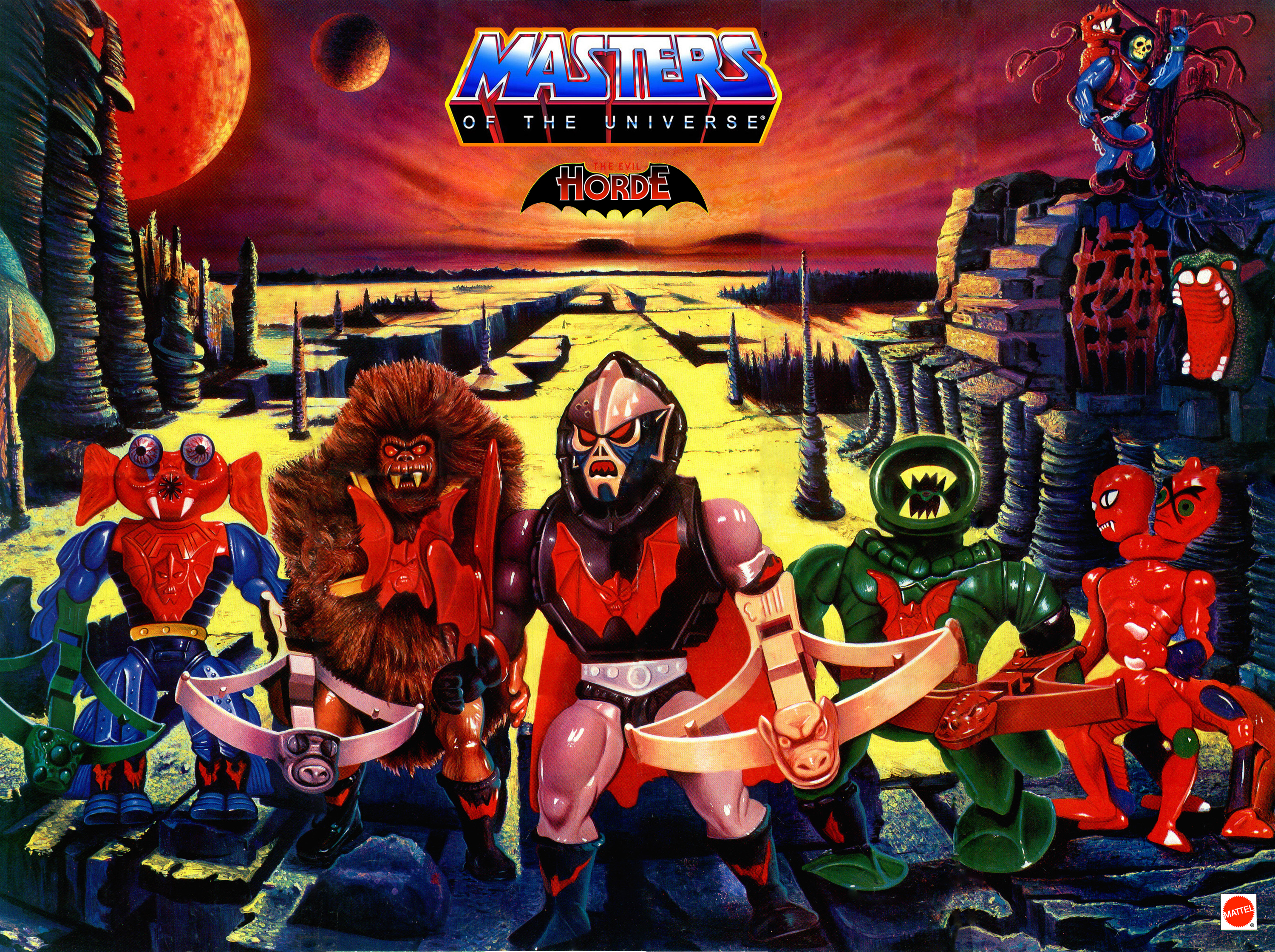
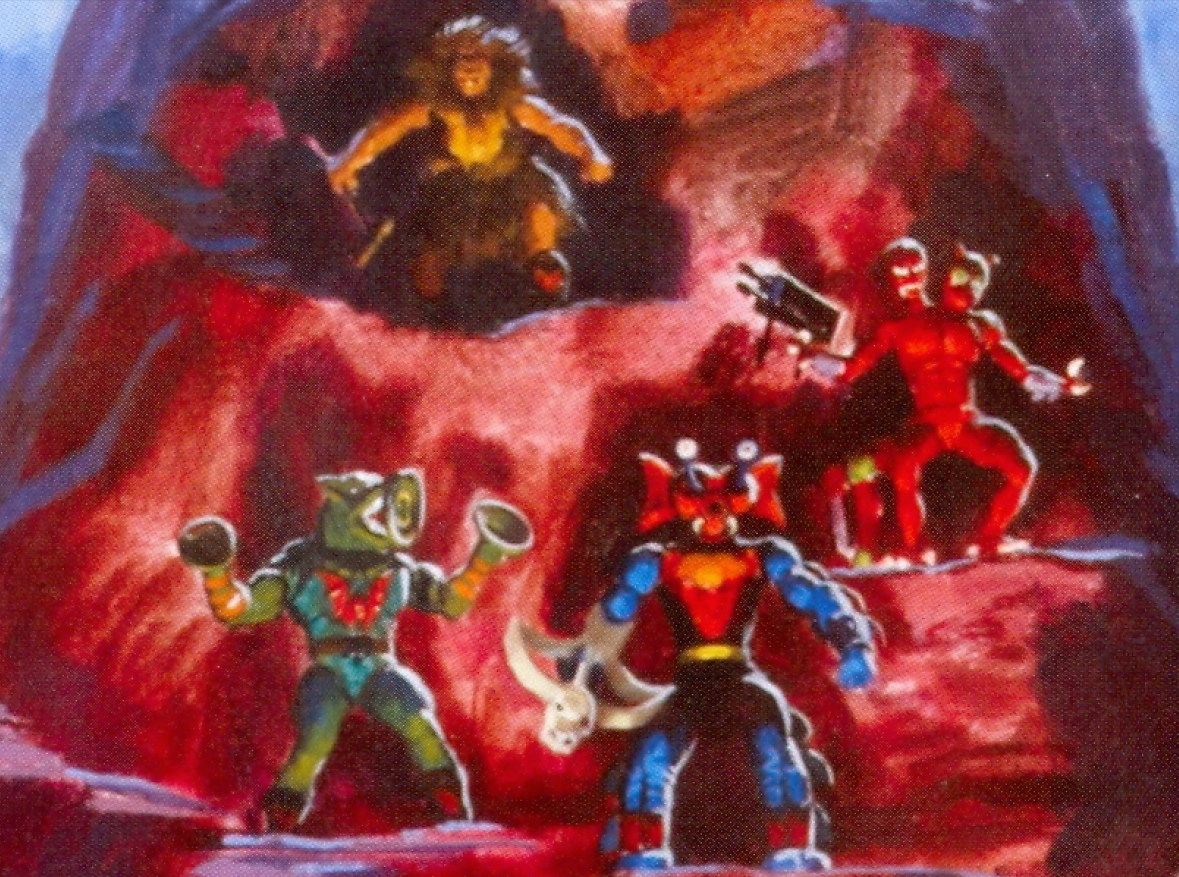


I won’t say that Leech is my all-time favorite Masters of the Universe figure, but he’s definitely in the top 10. He left a big enough impression on me that he was the first vintage MOTU figure that I repurchased as an adult.
Mini comic images and Errol McCarthy artwork are from He-Man.org.
Want to support the blog? Consider becoming a Patreon supporter. You’ll also gain access to exclusive content and early access to posts on the blog. Alternatively, you can do your toy shopping through my Entertainment Earth affiliate link, below. Thank you!
